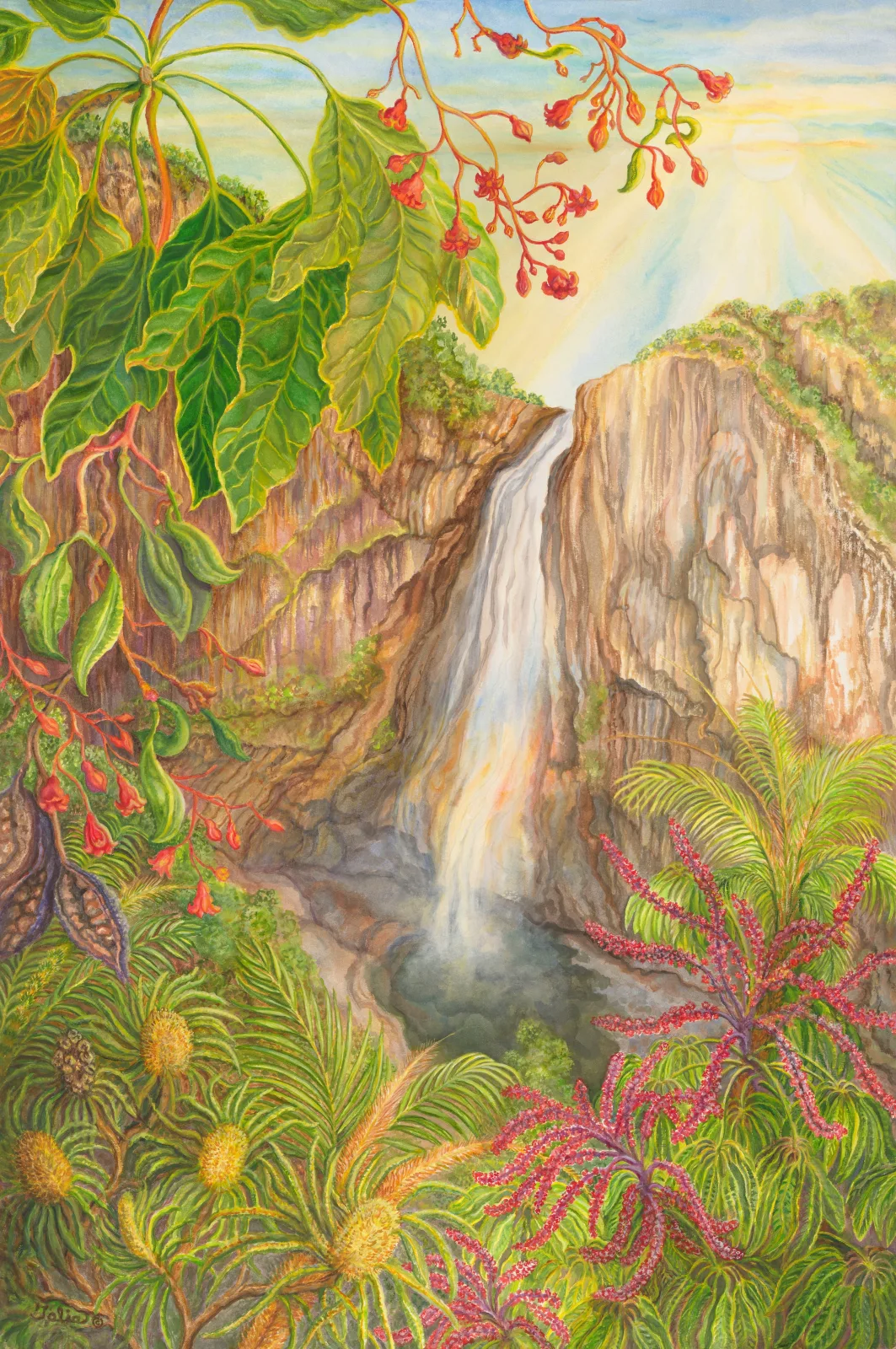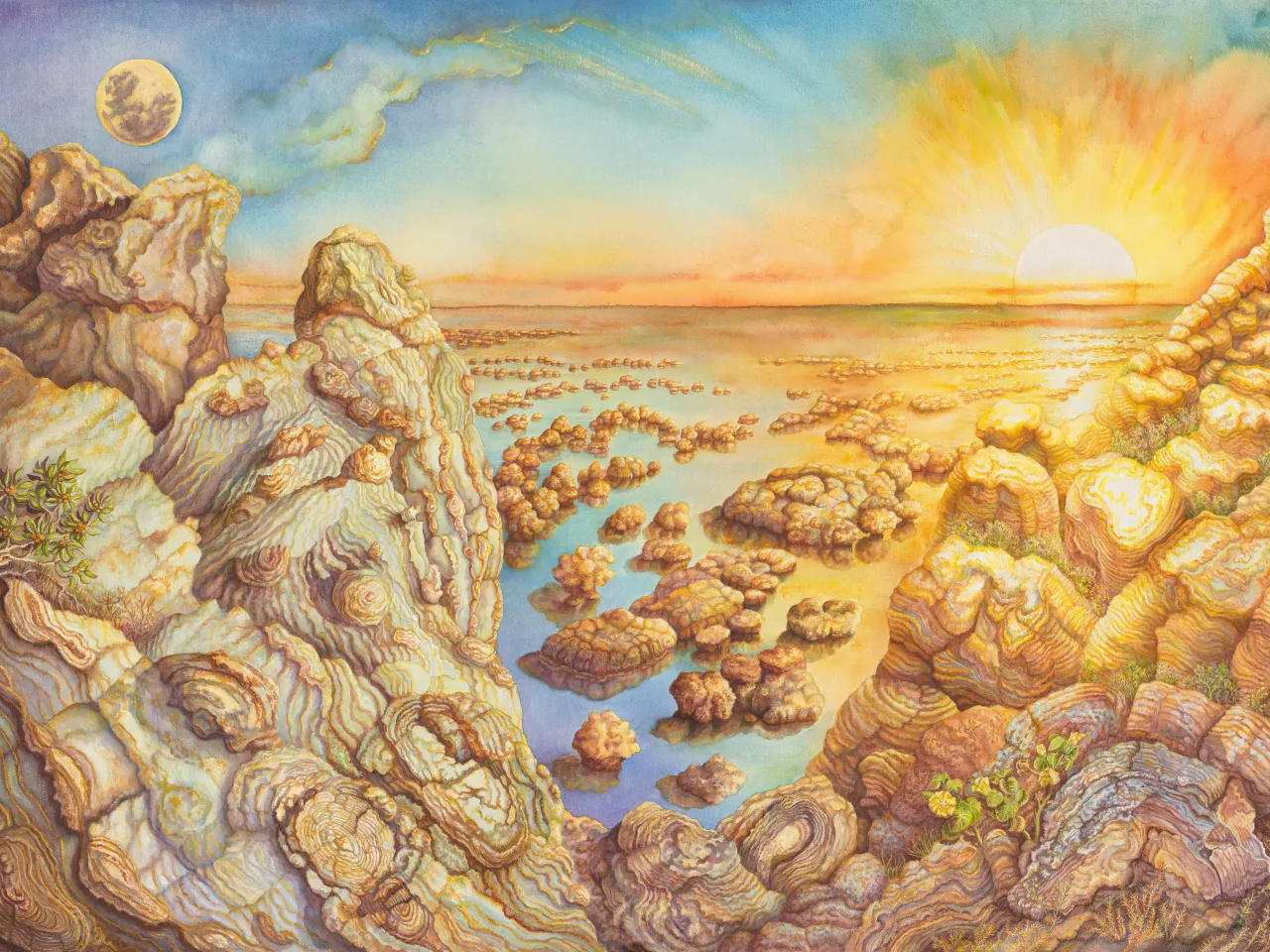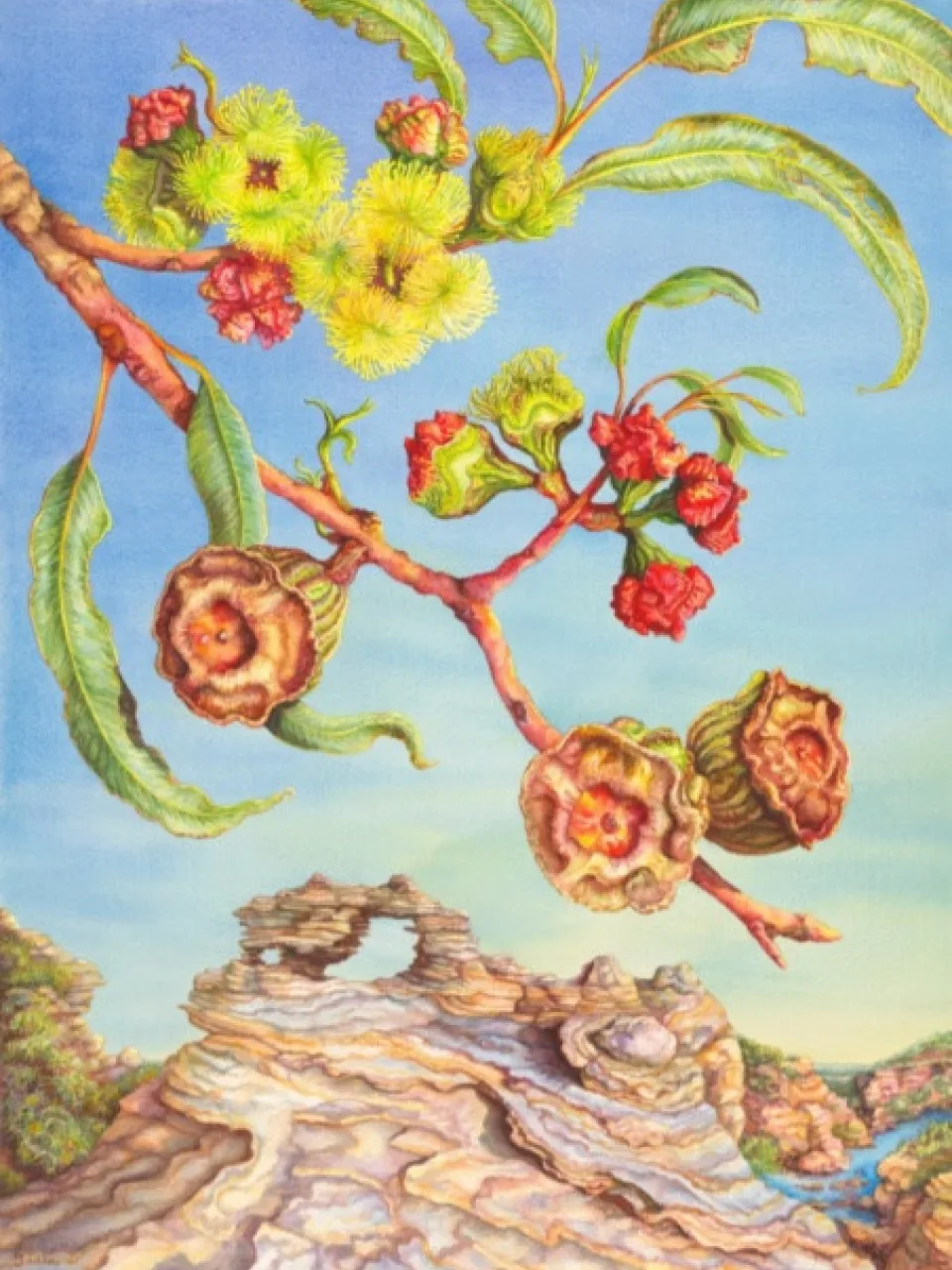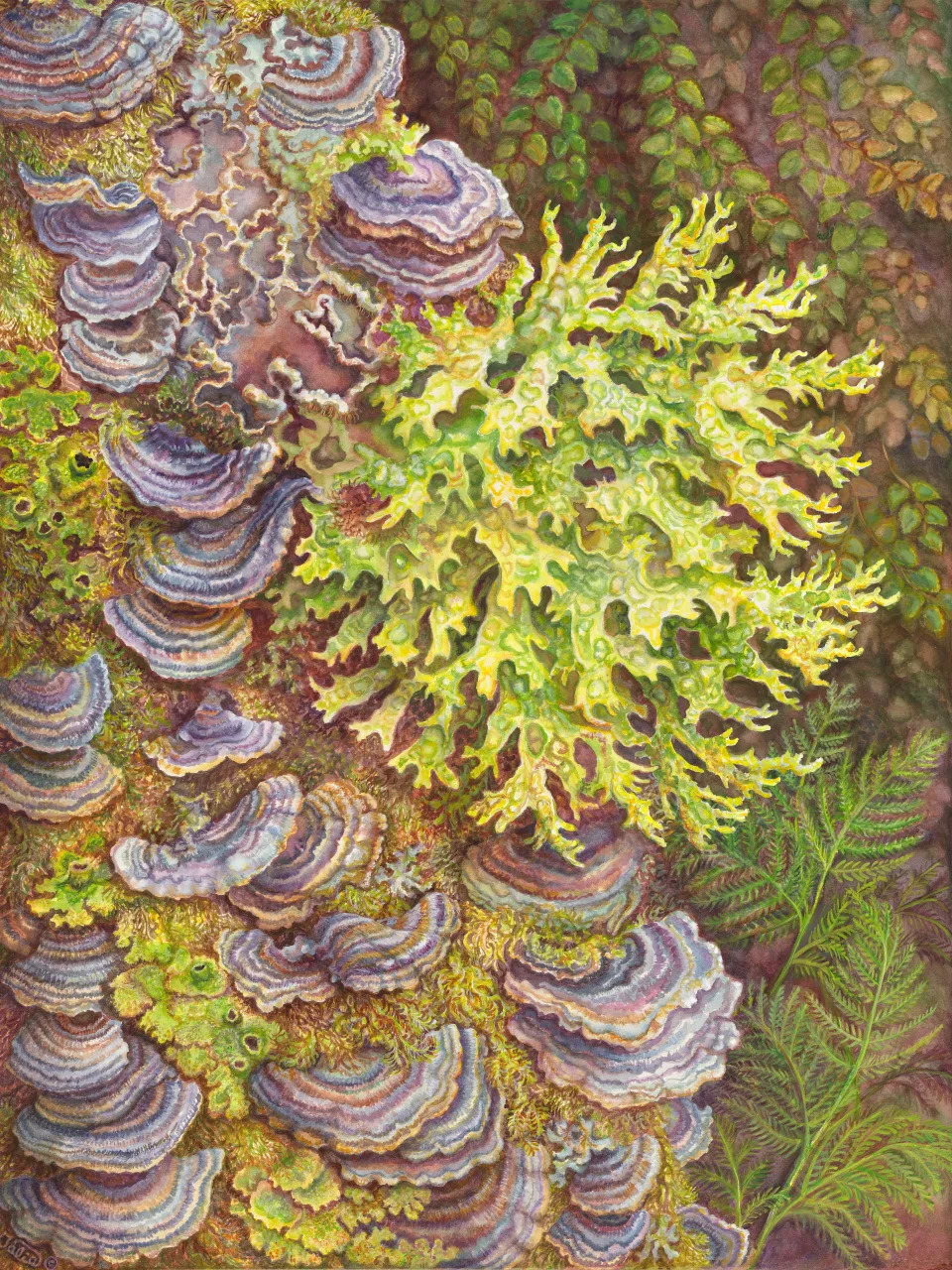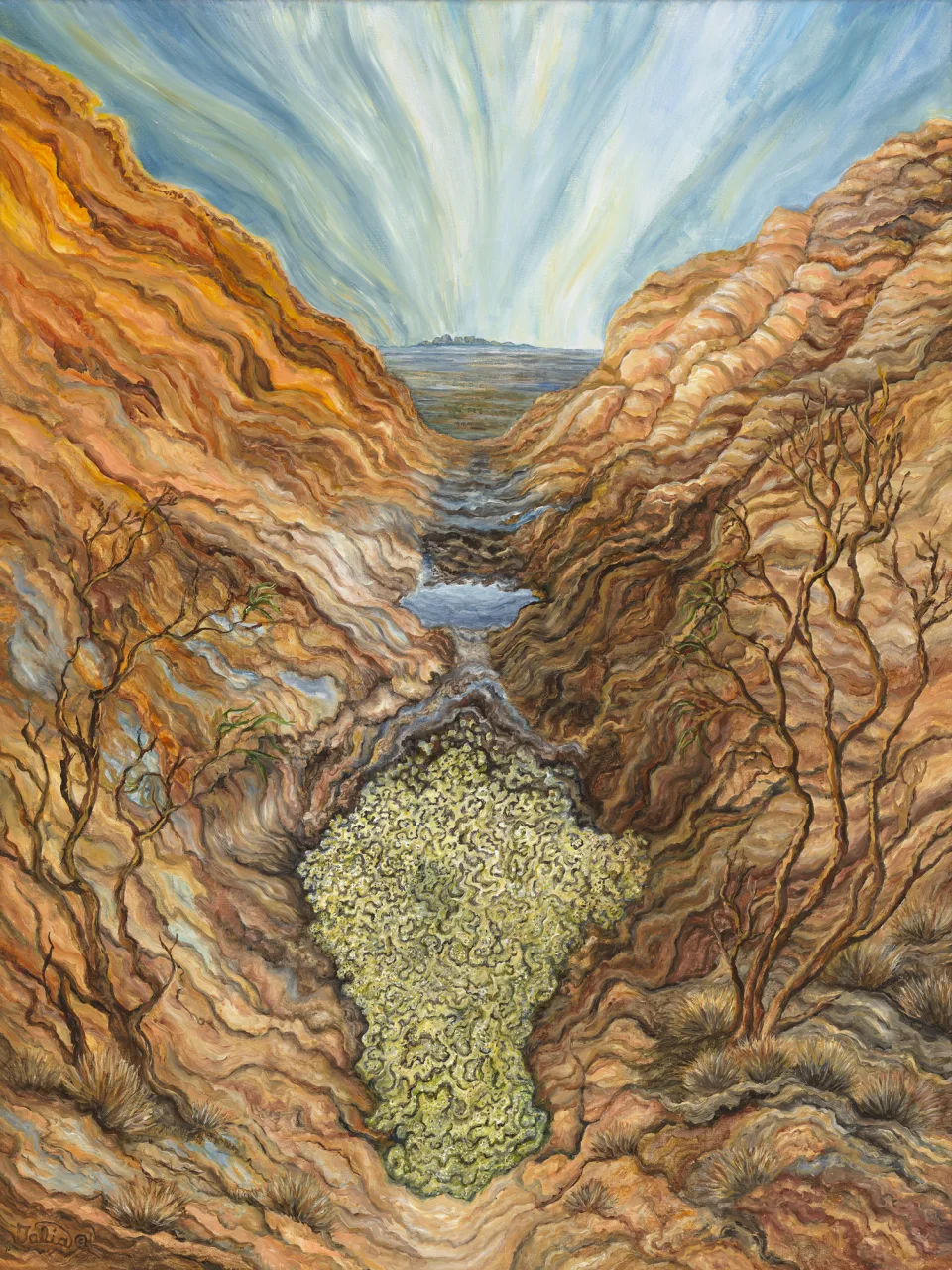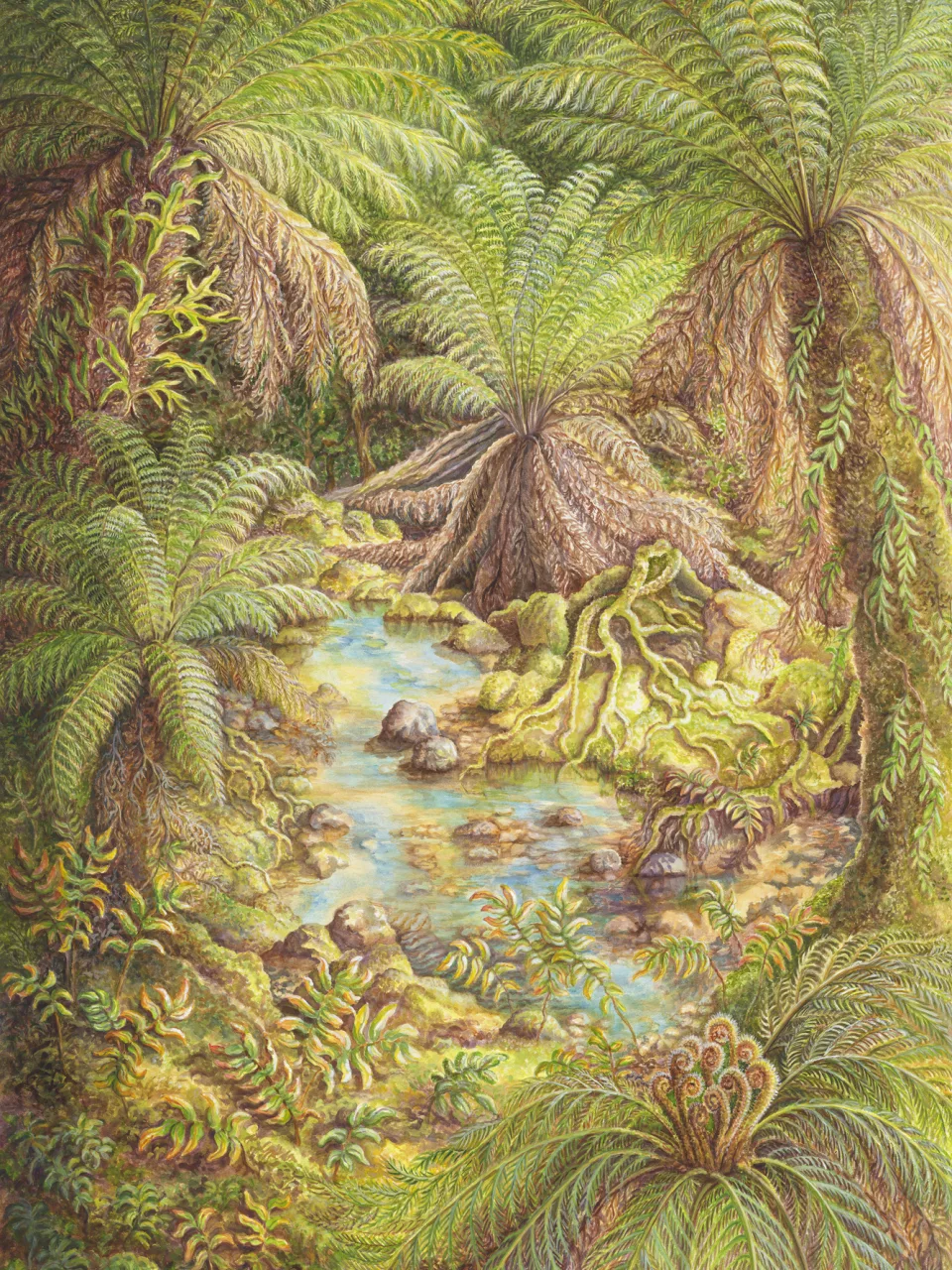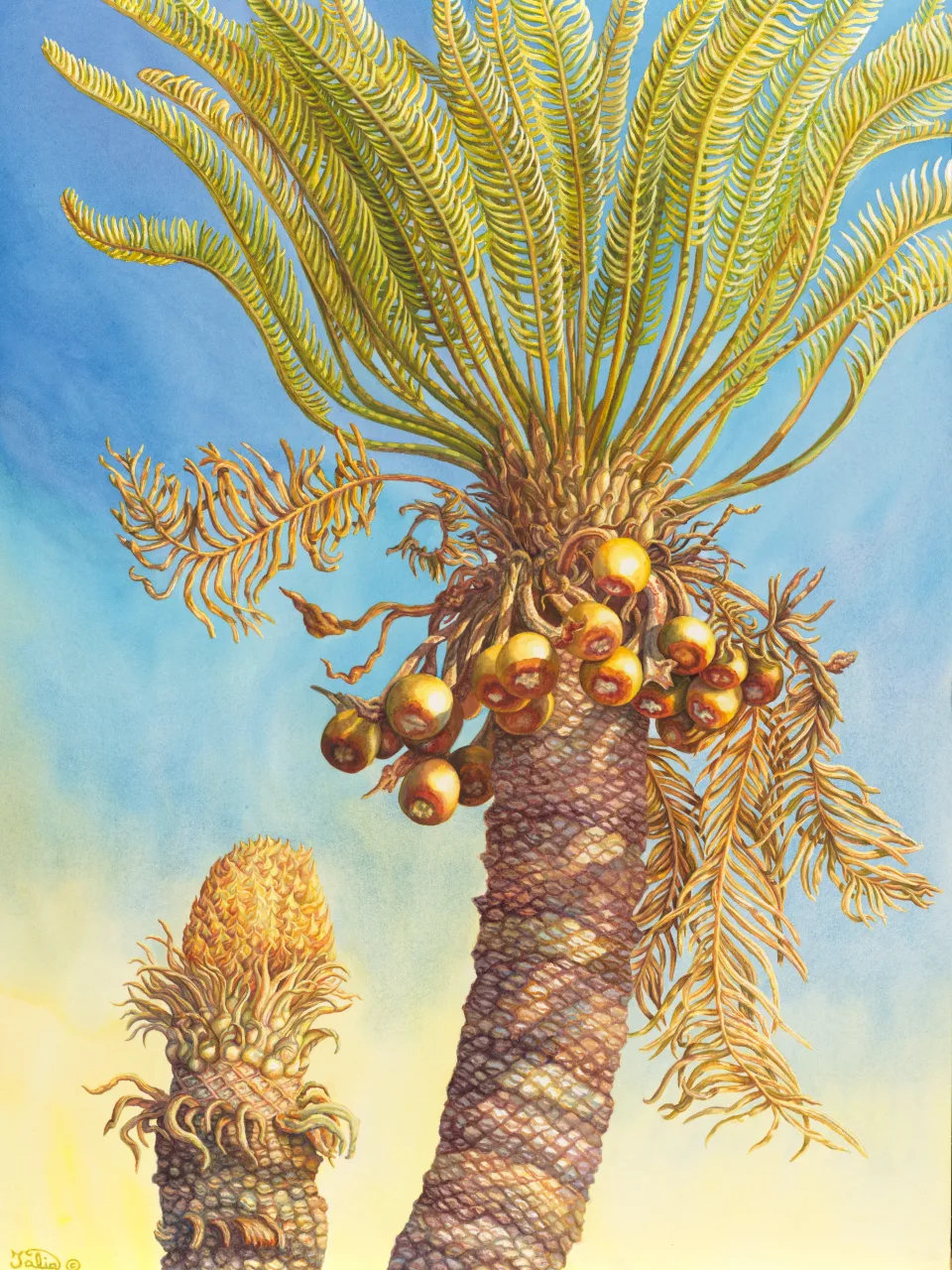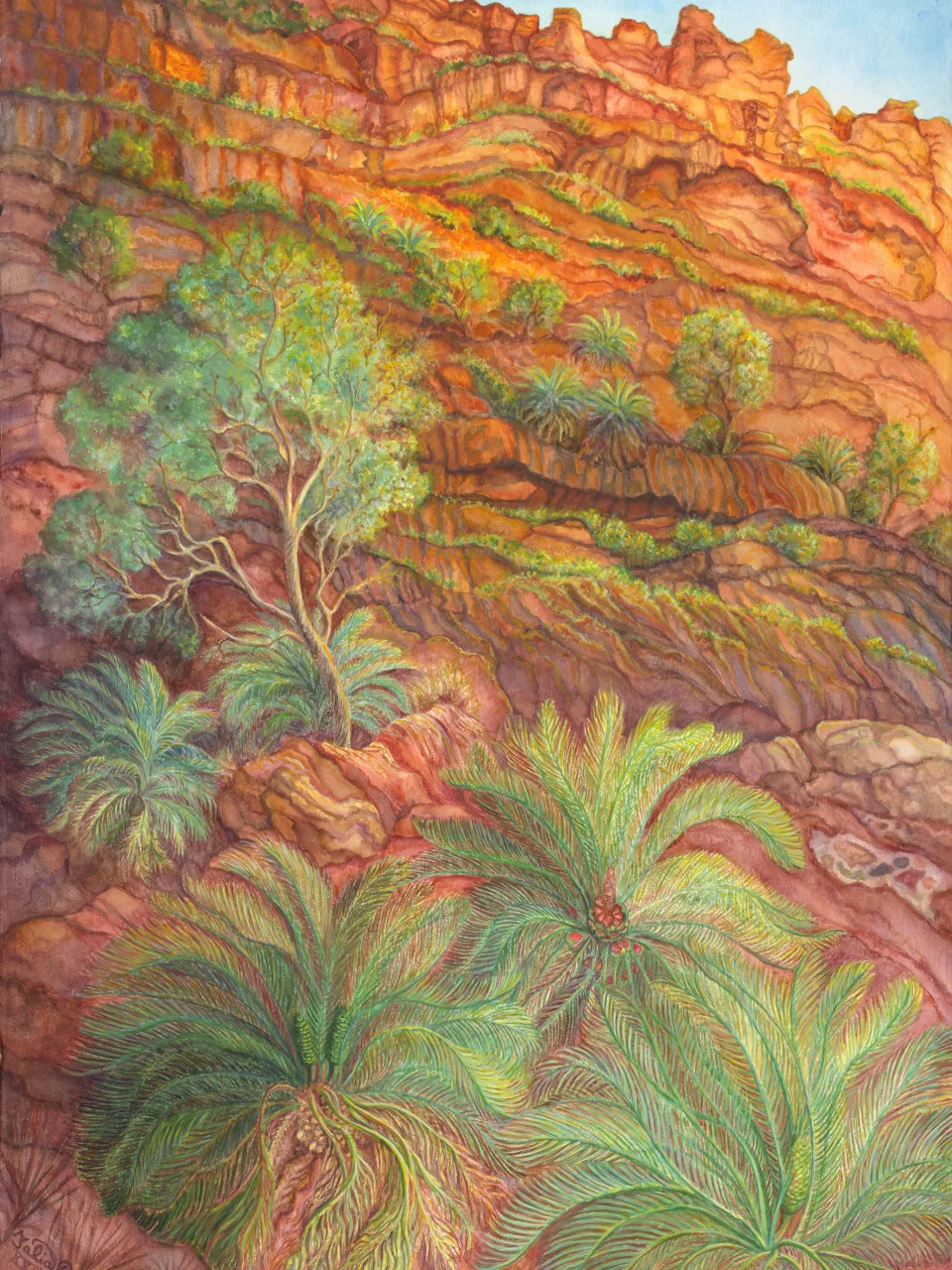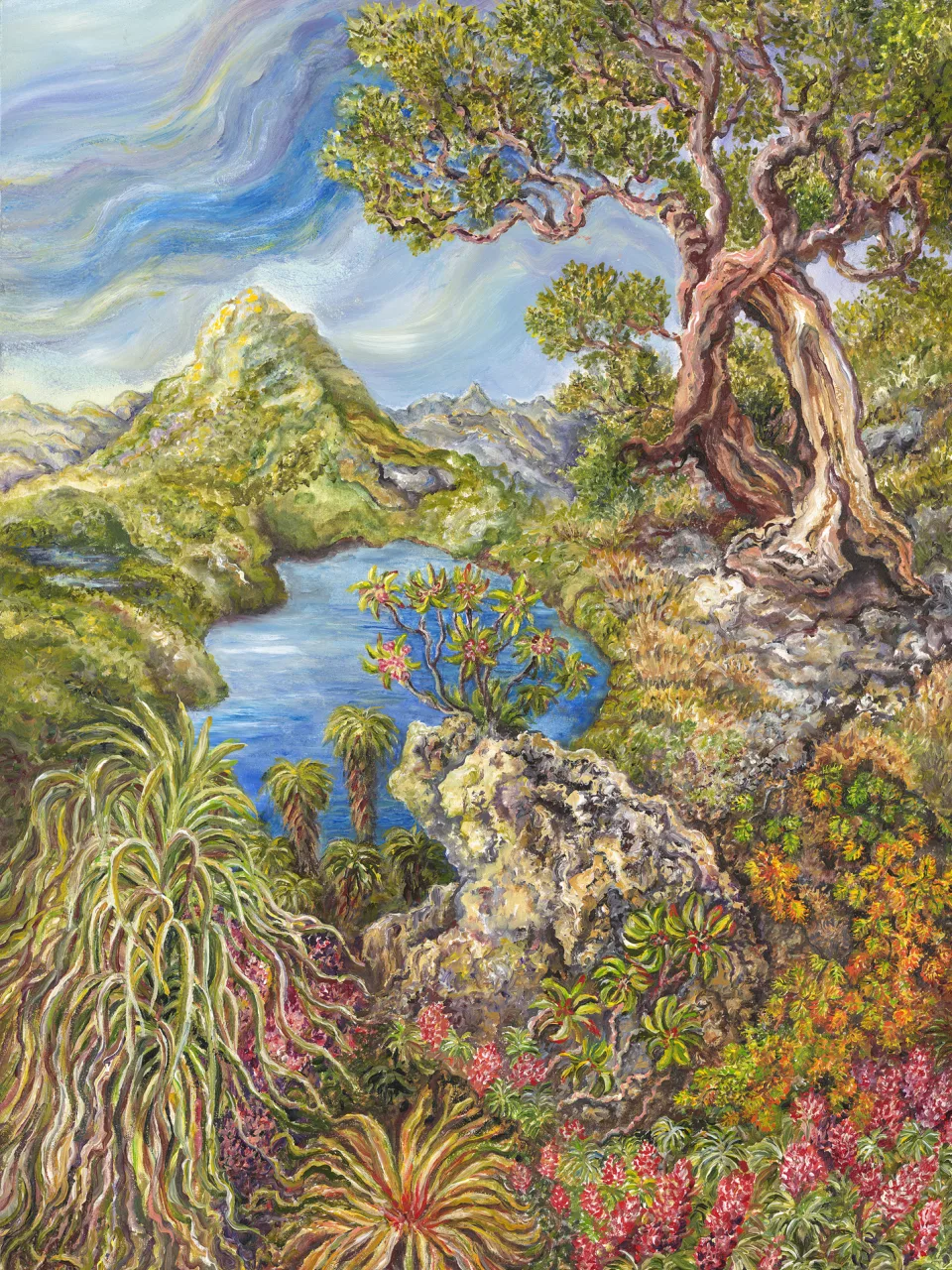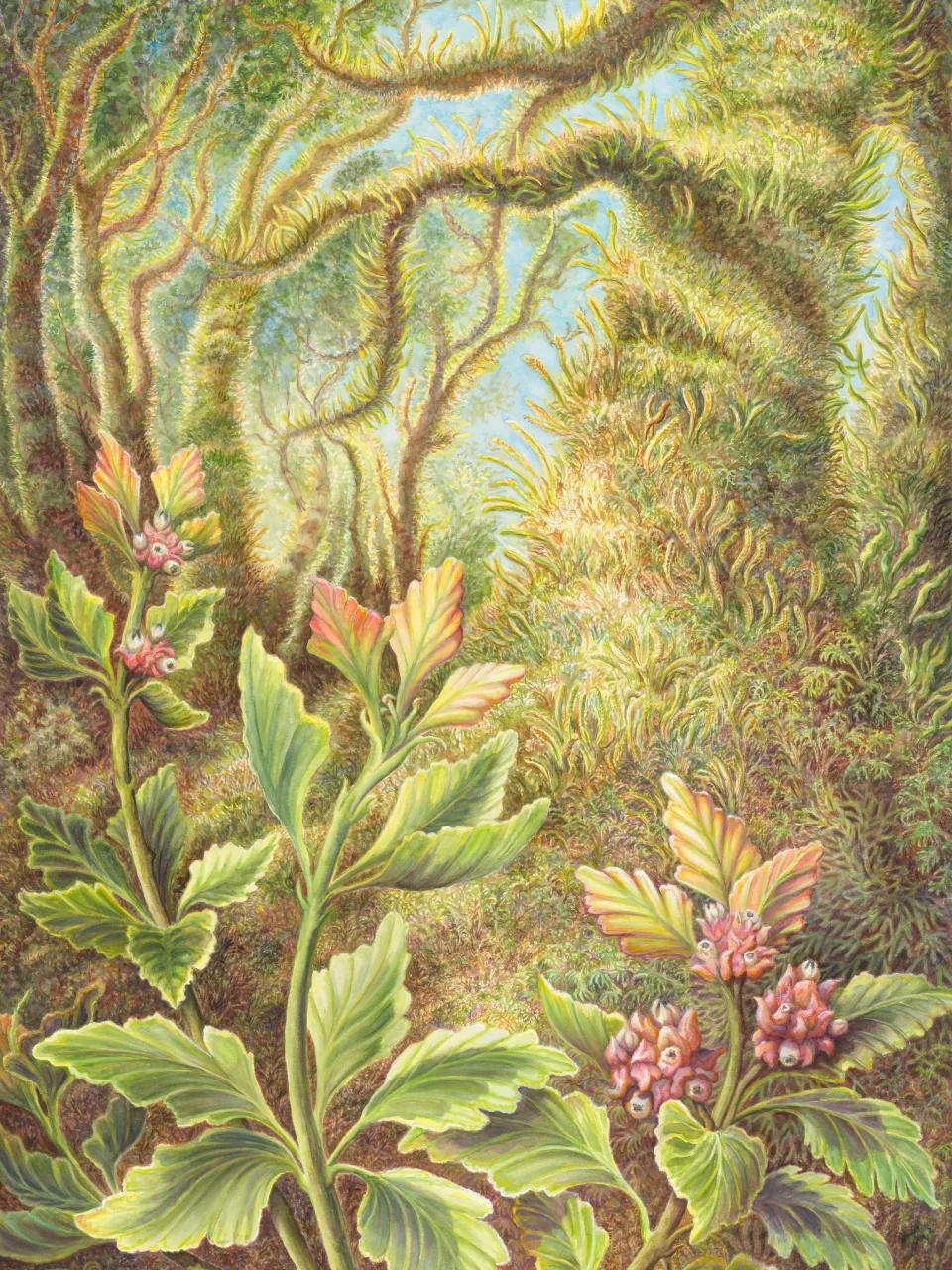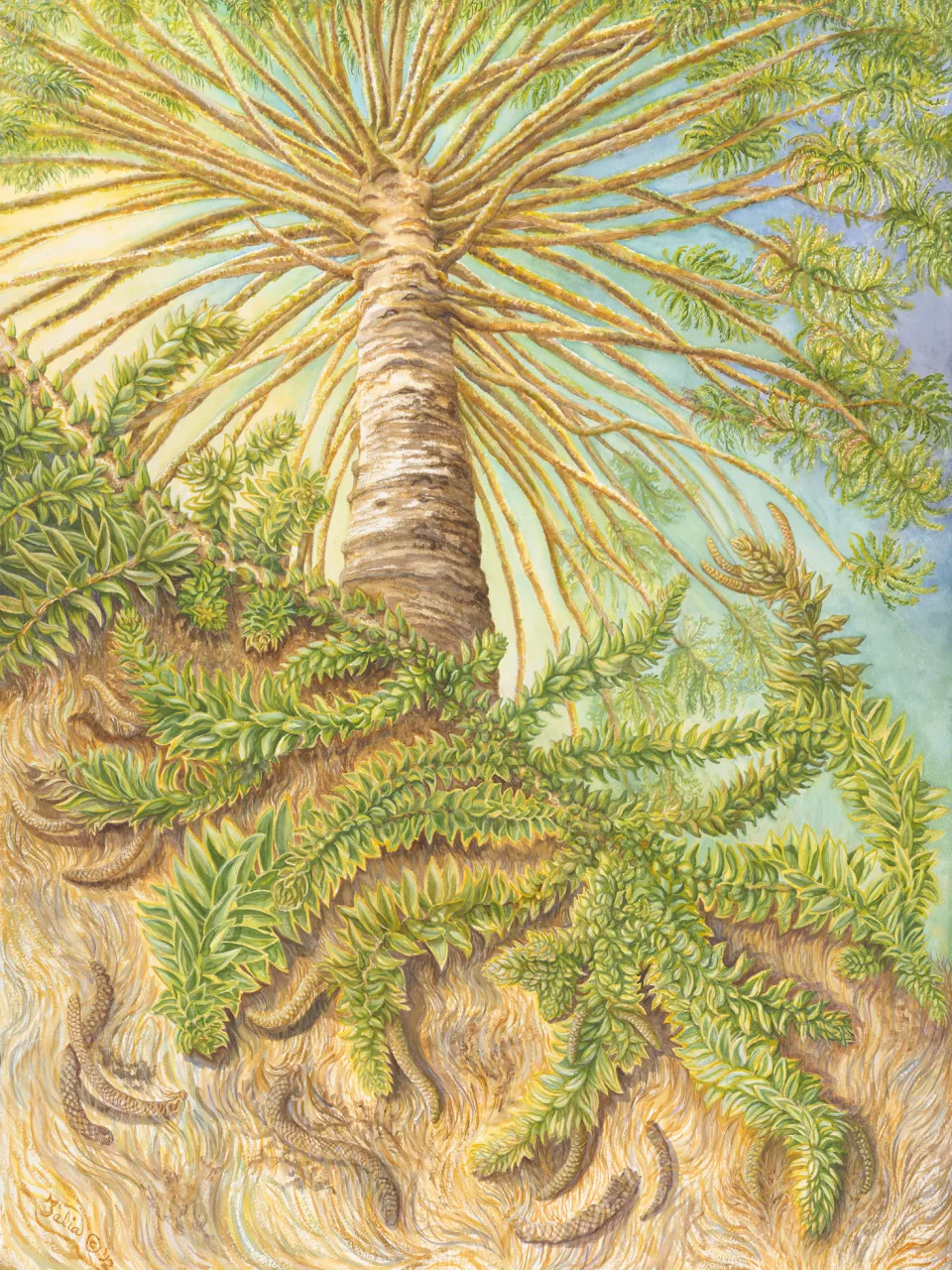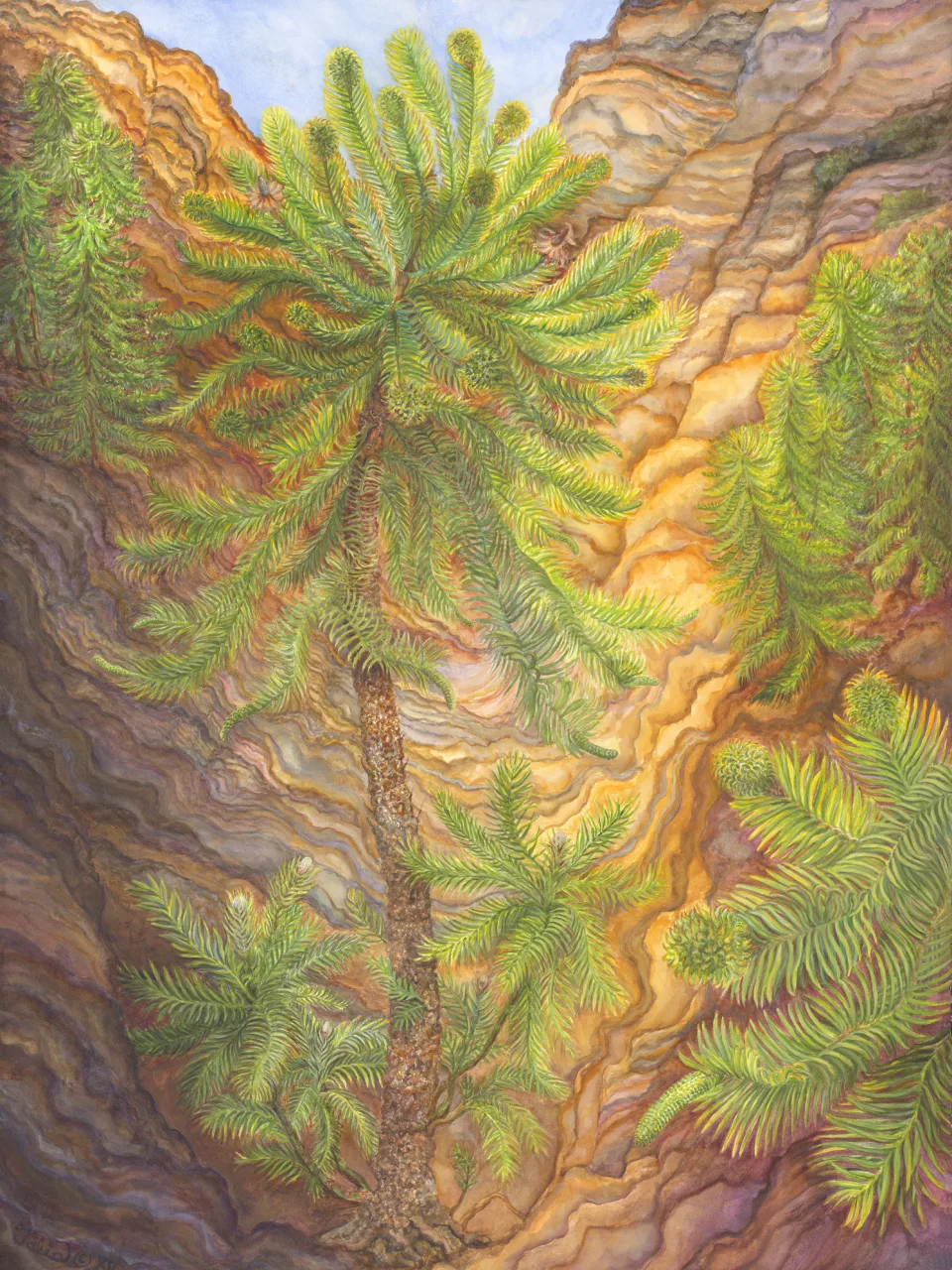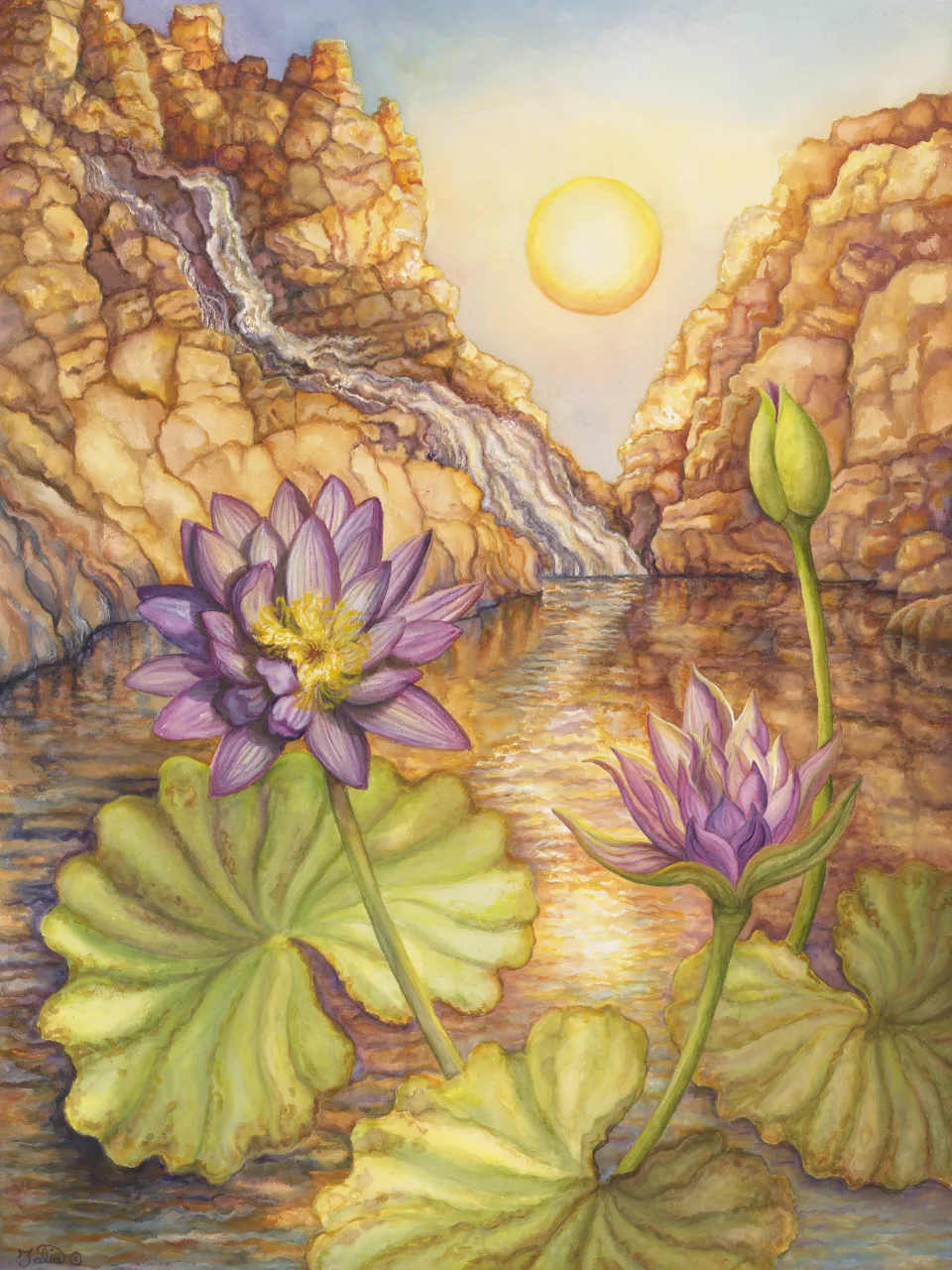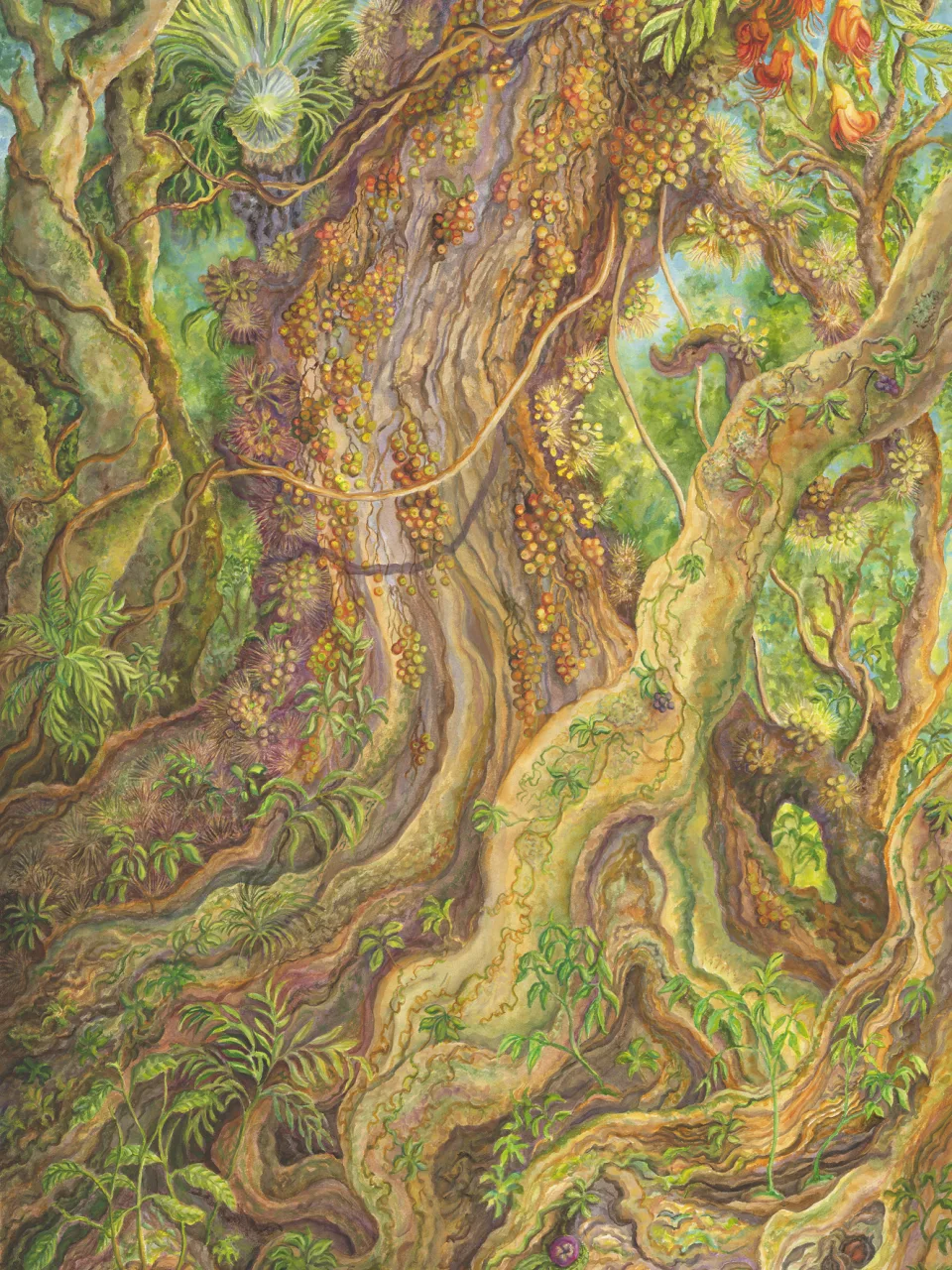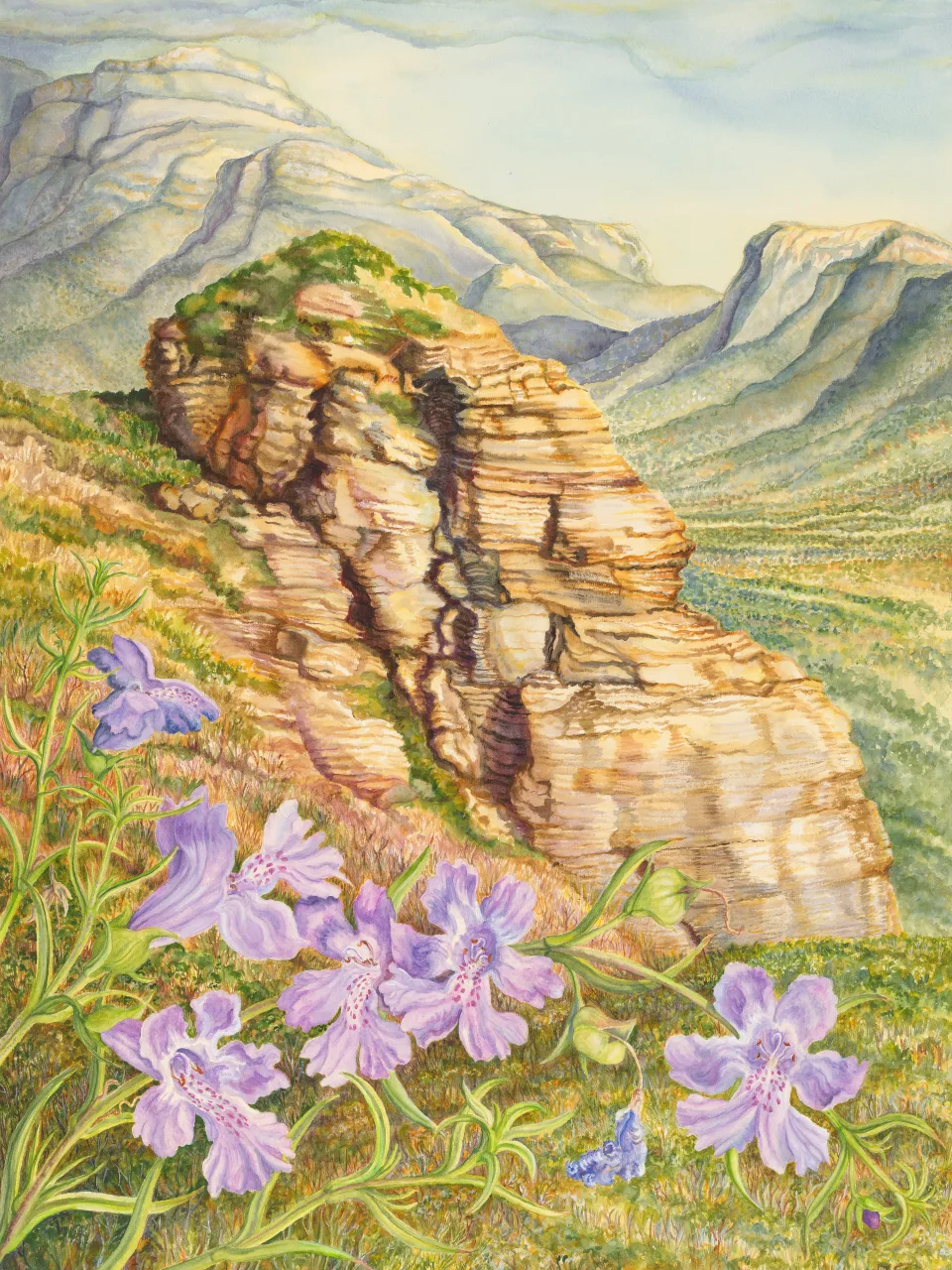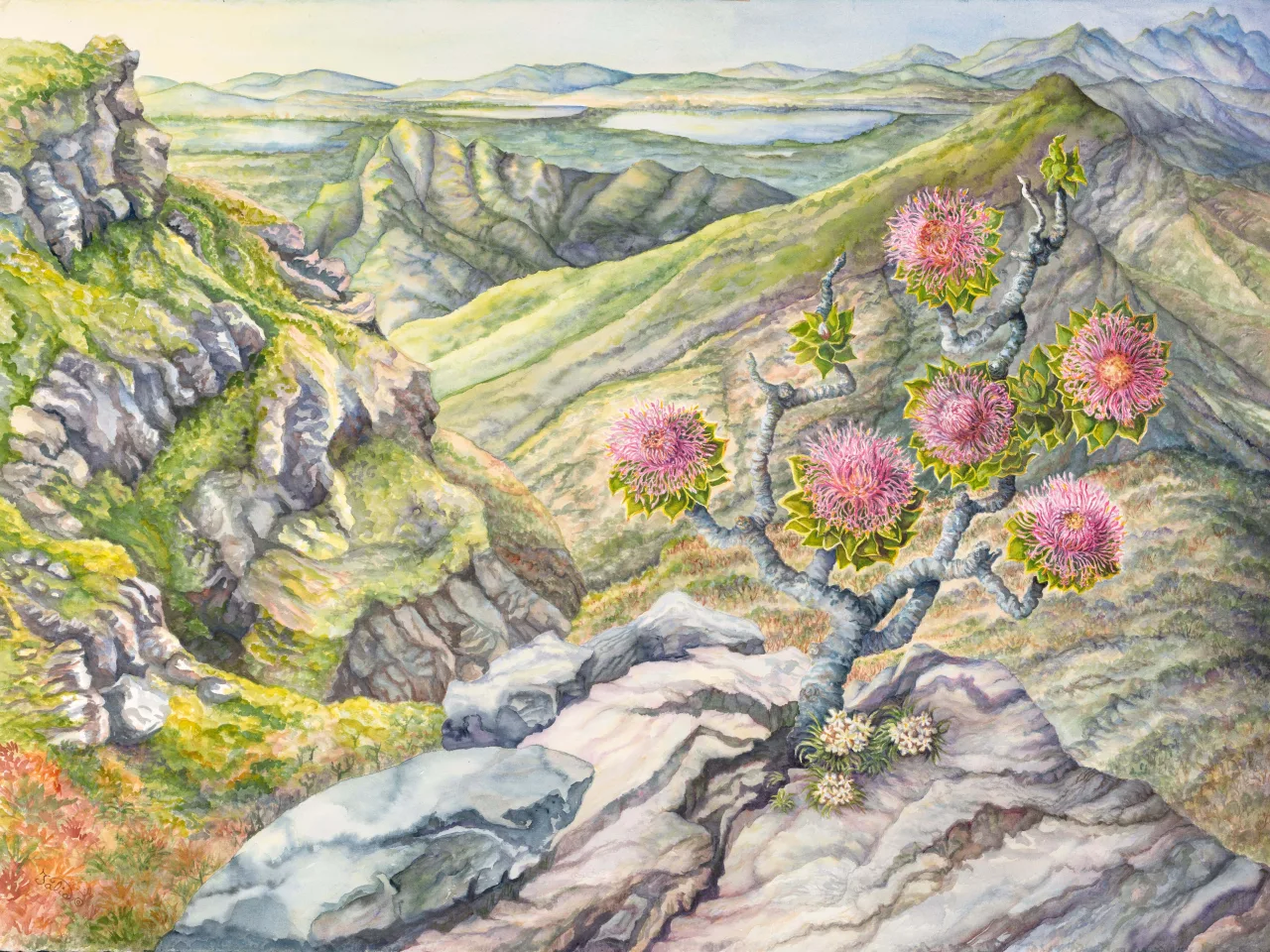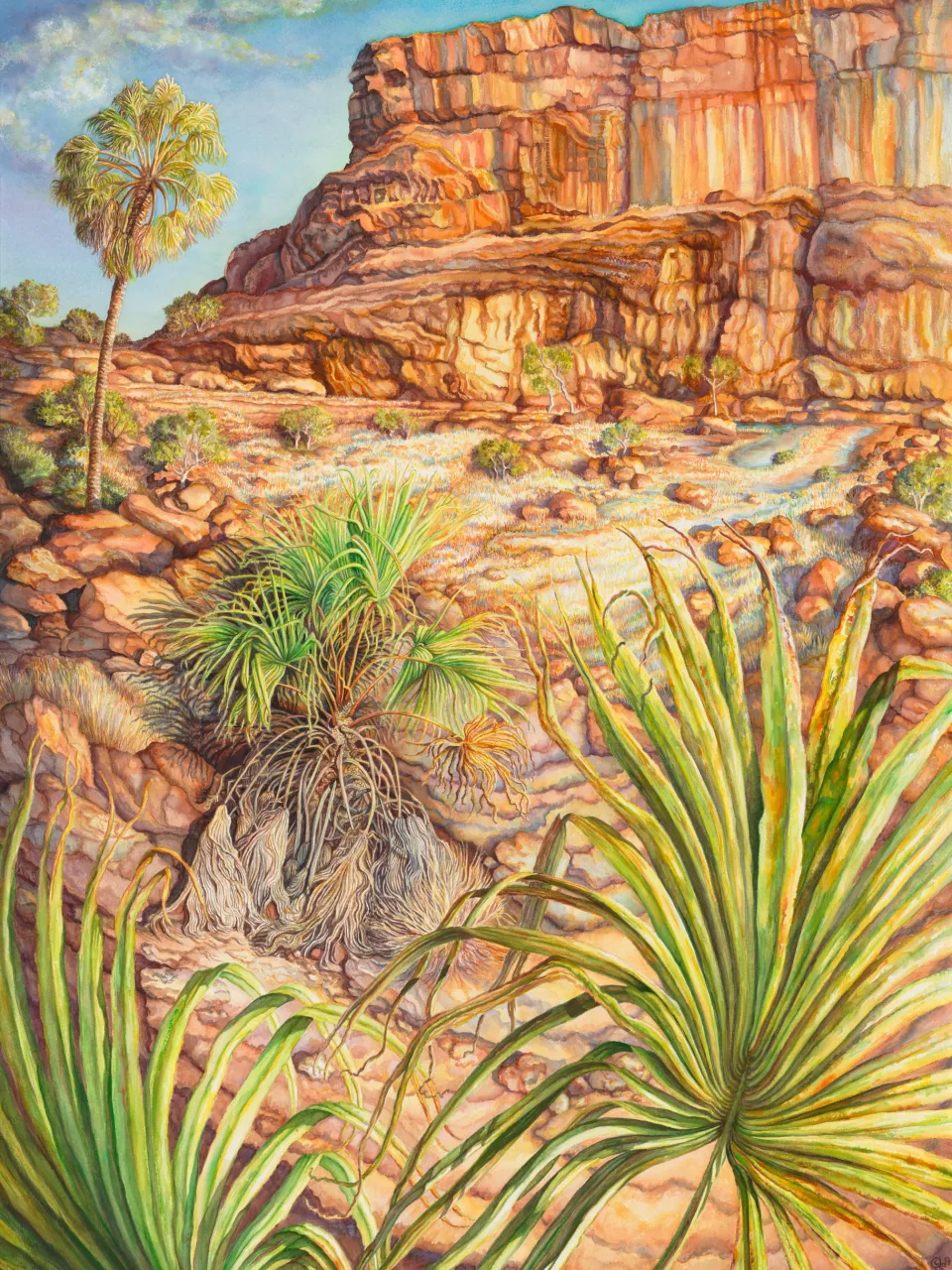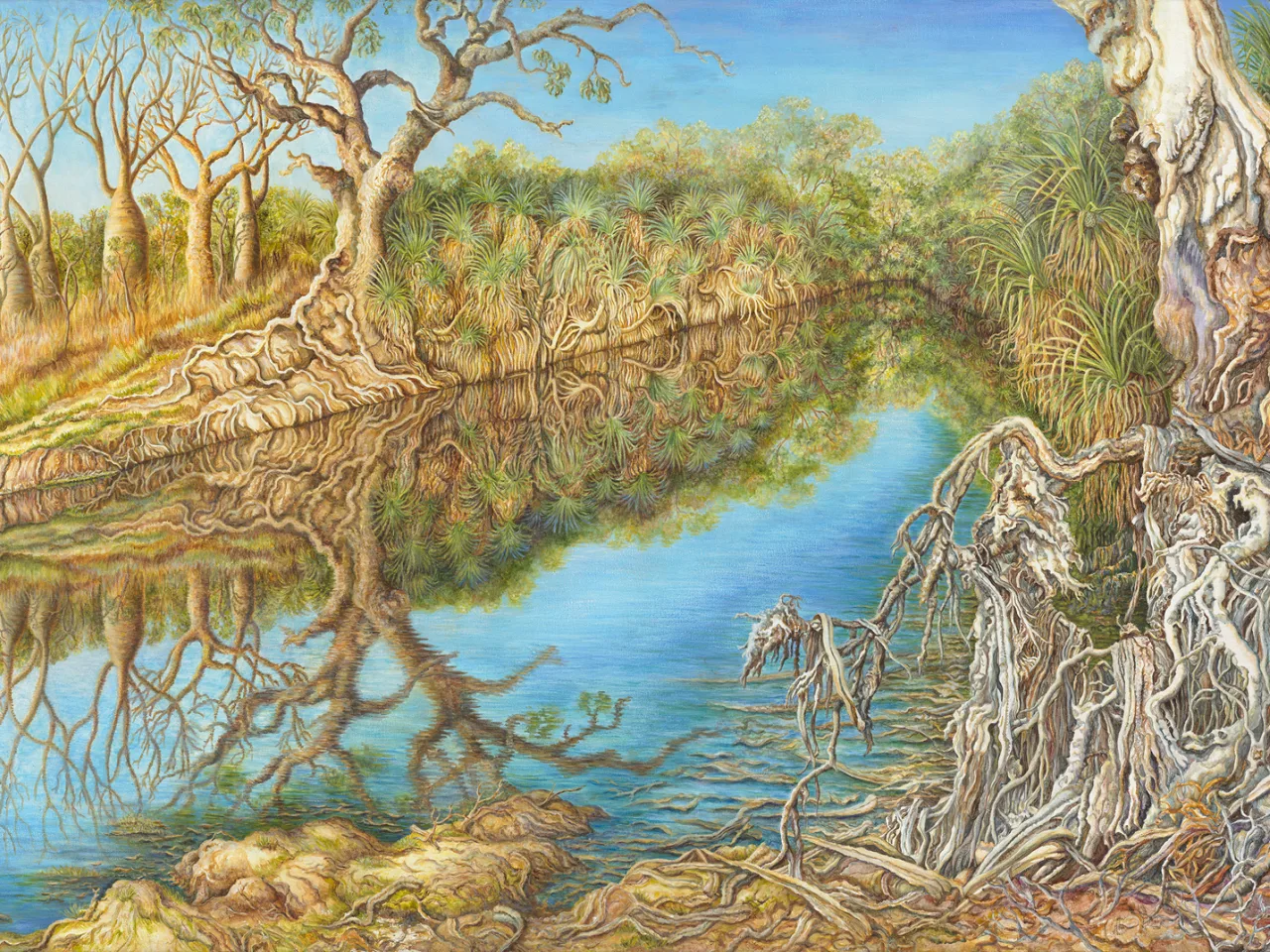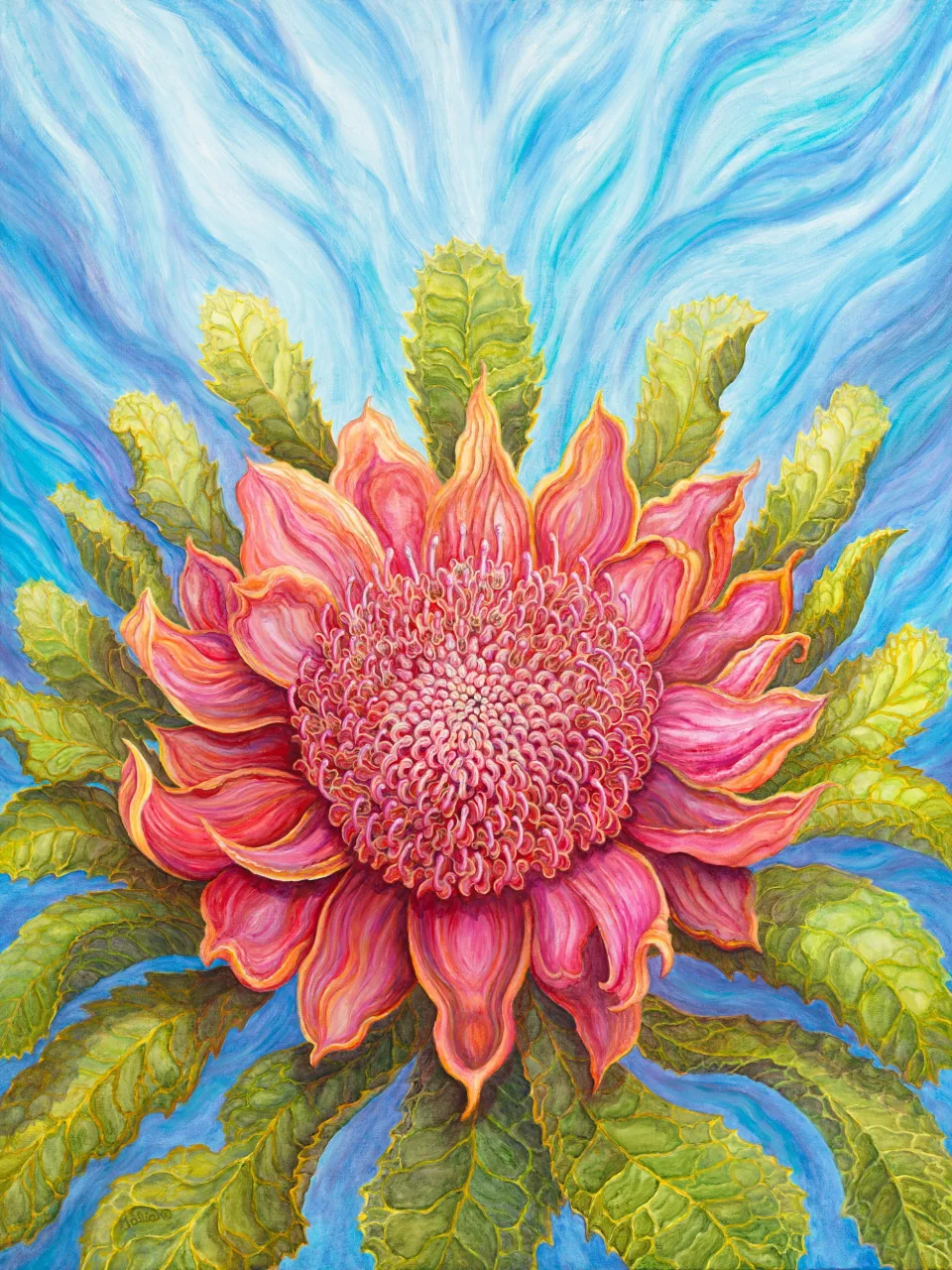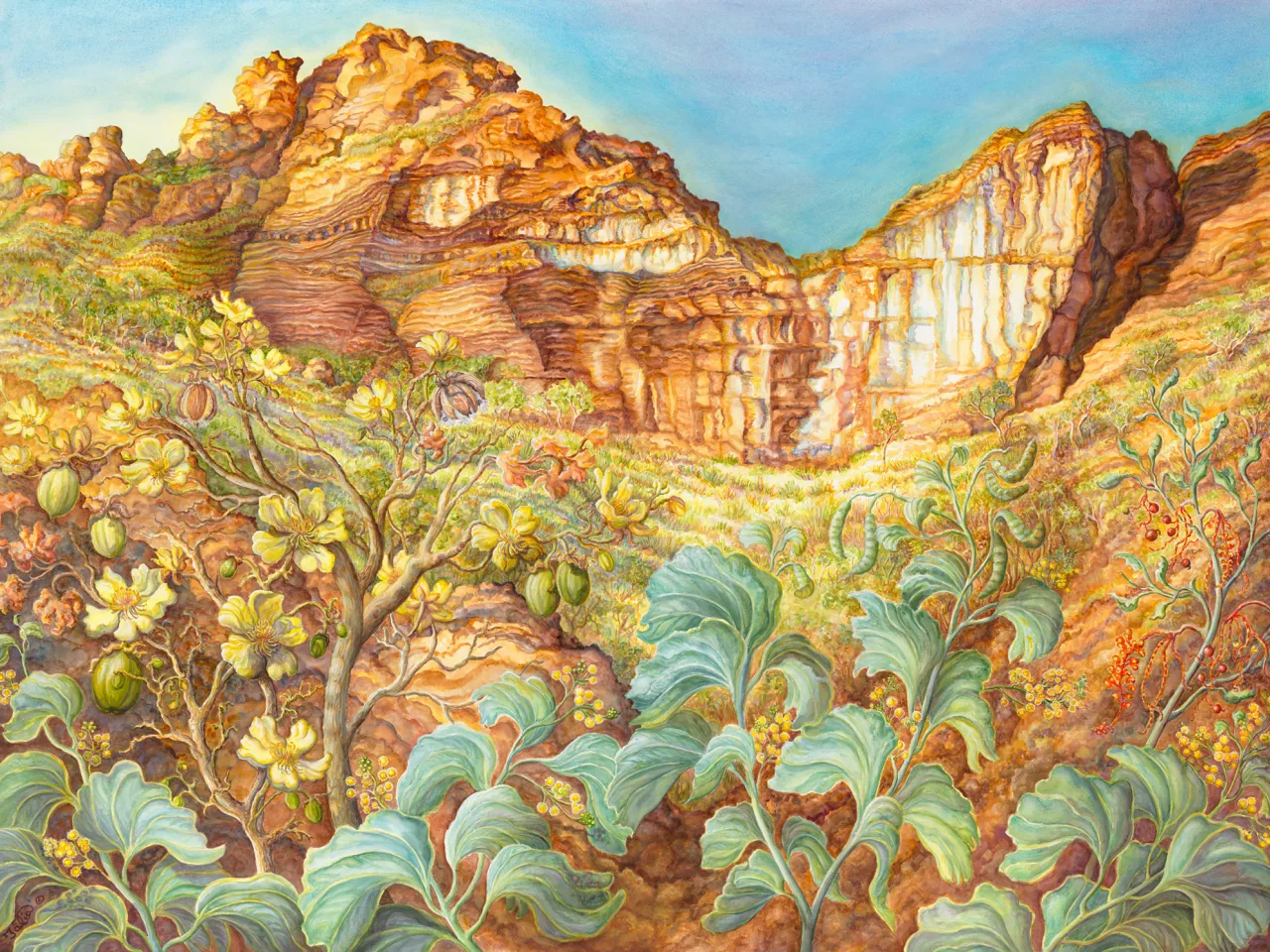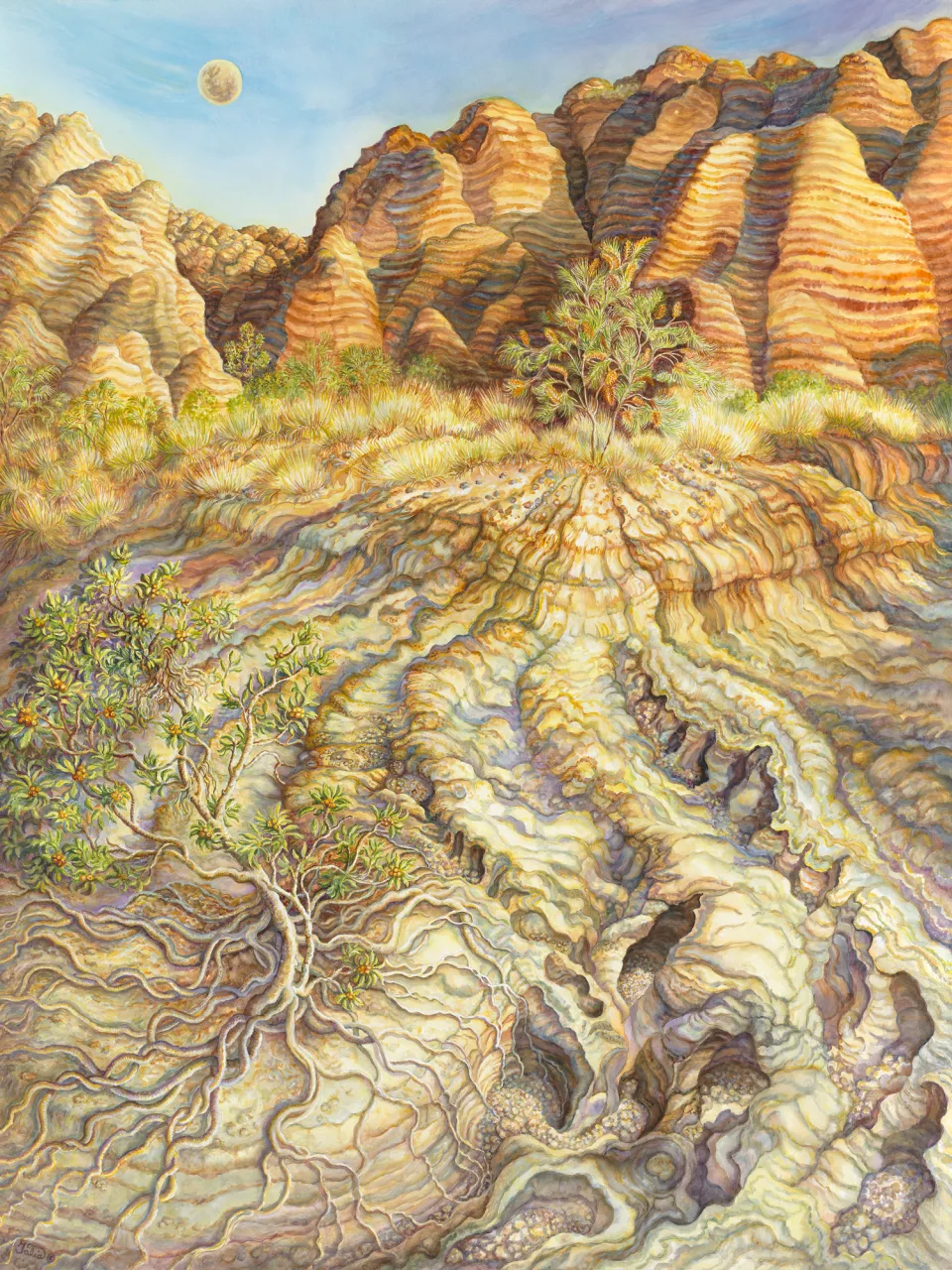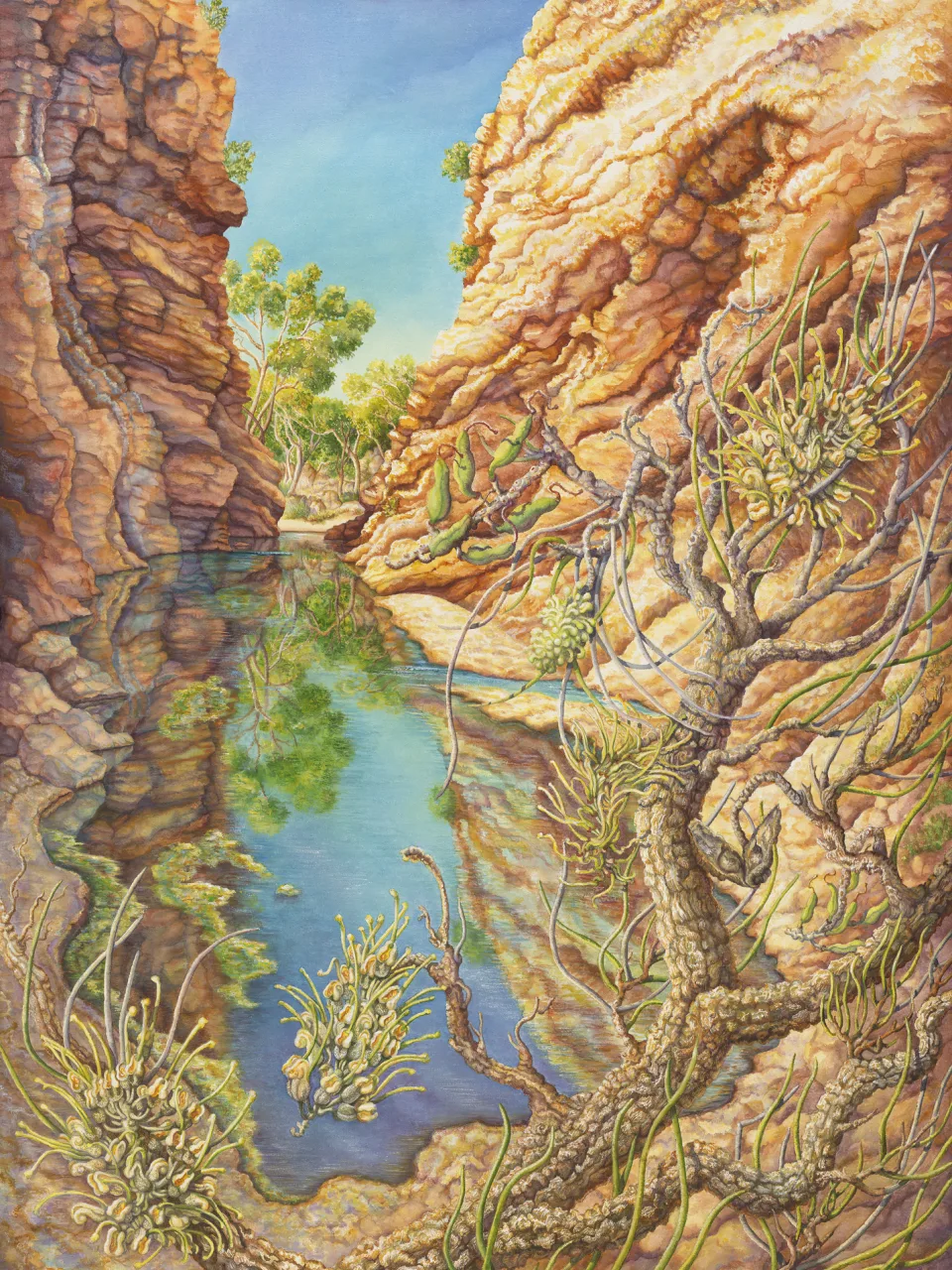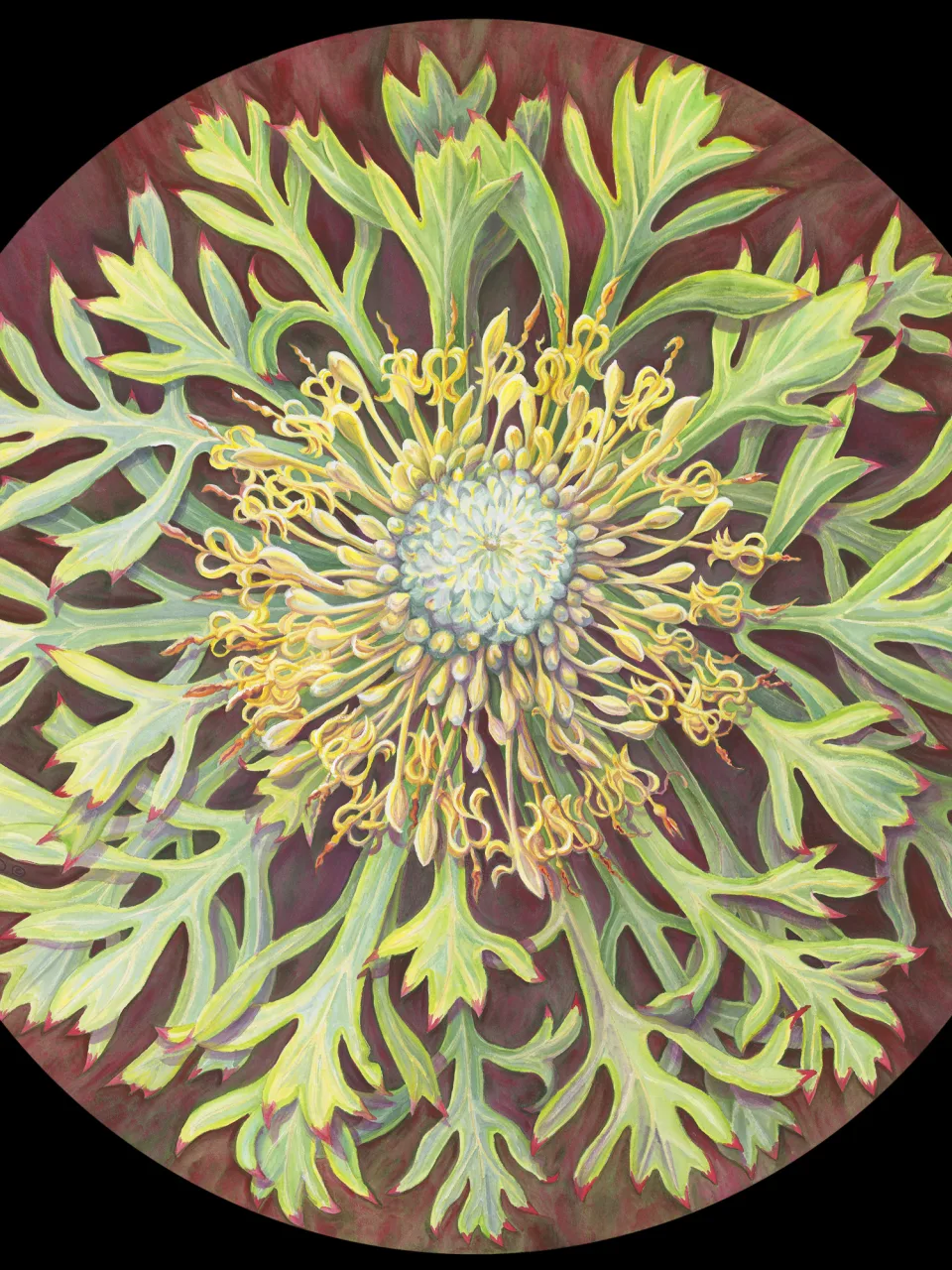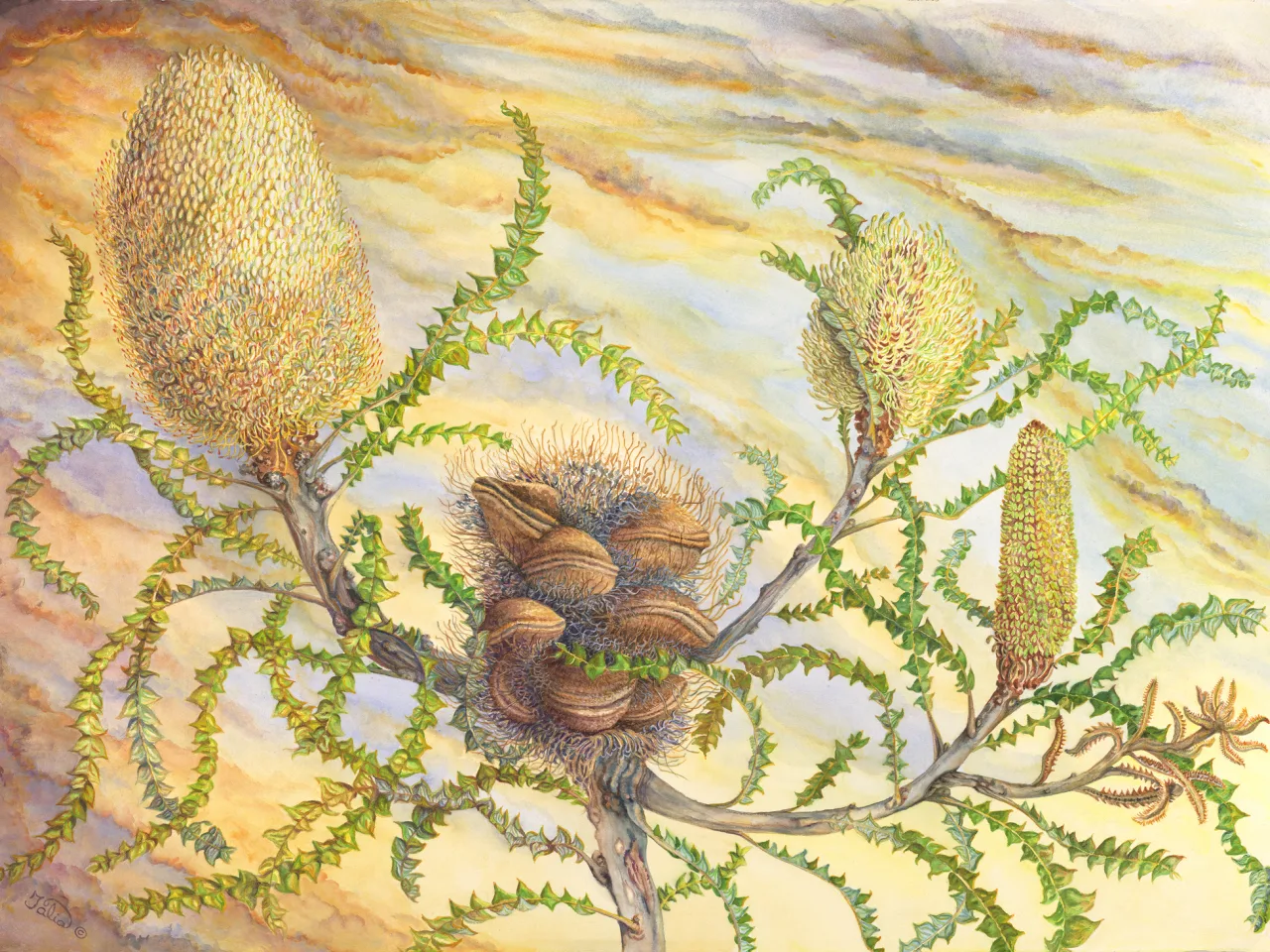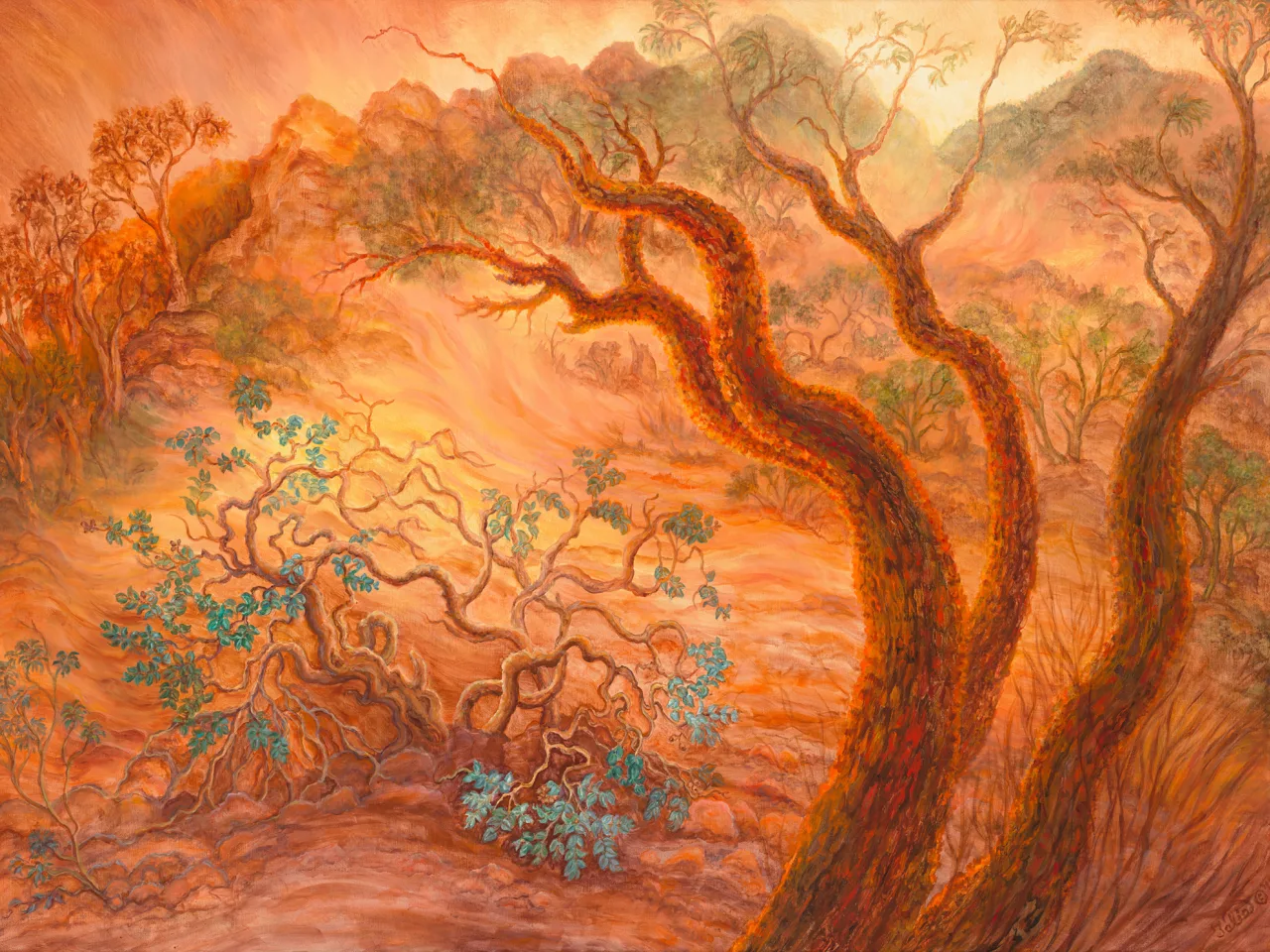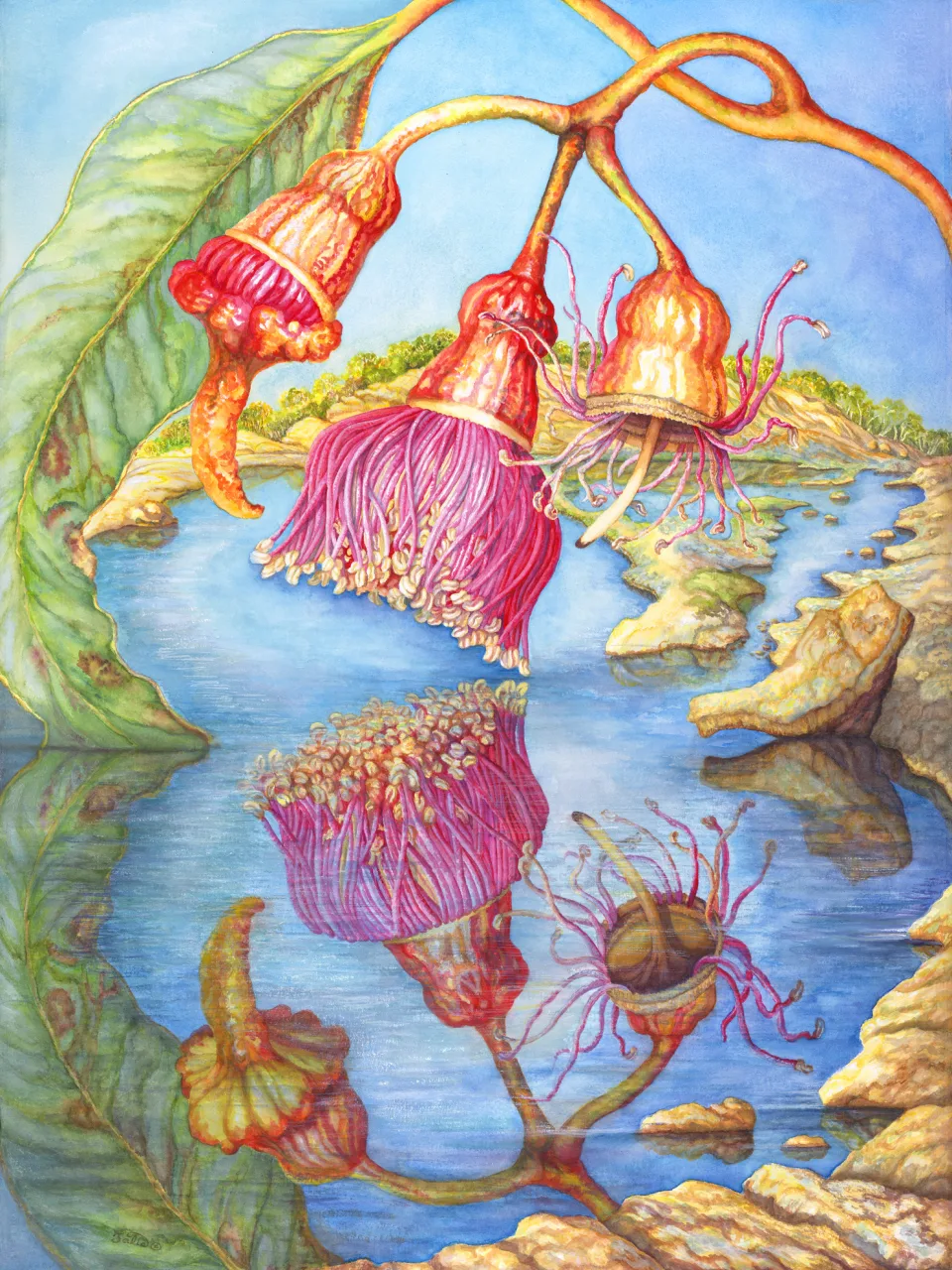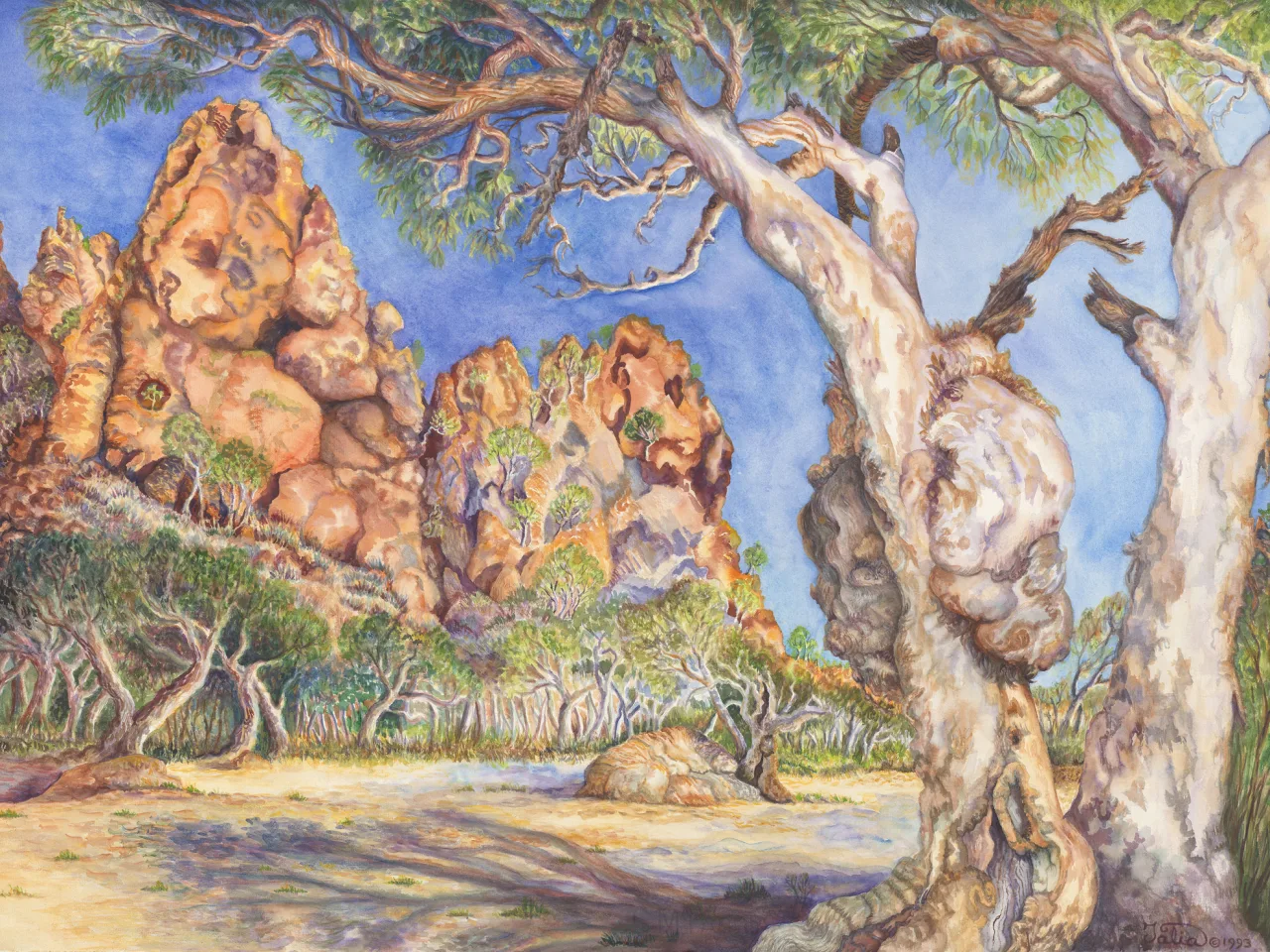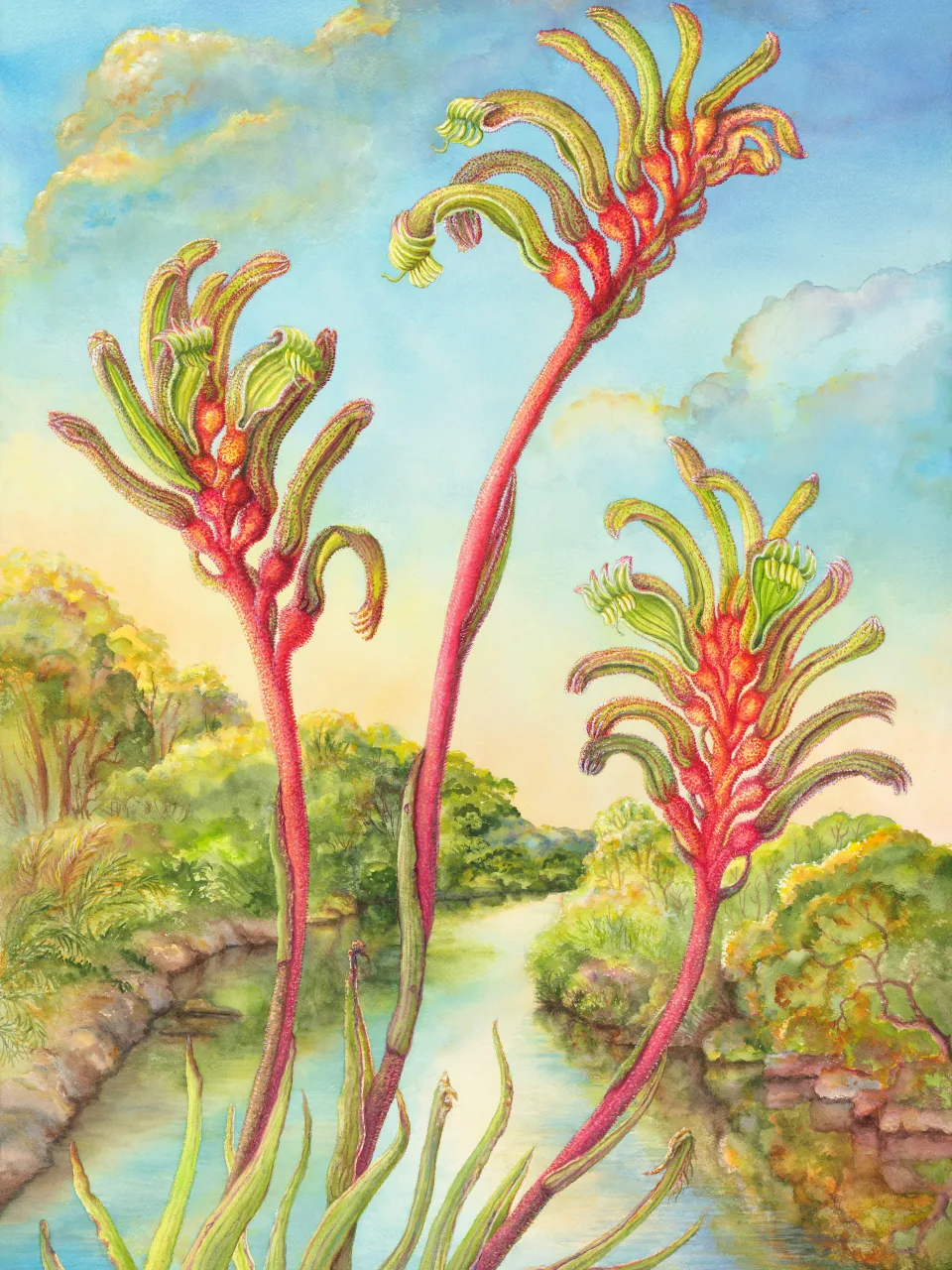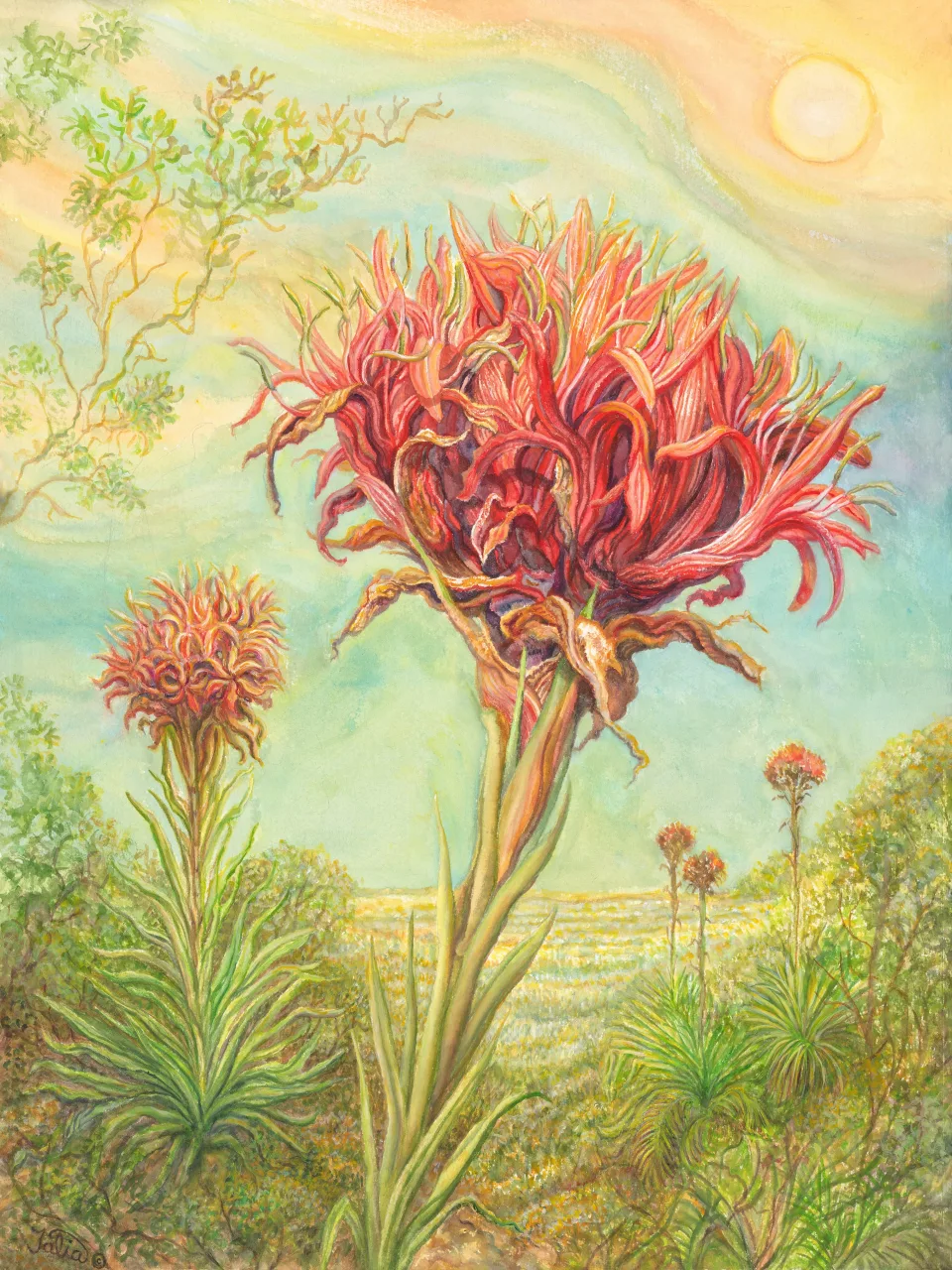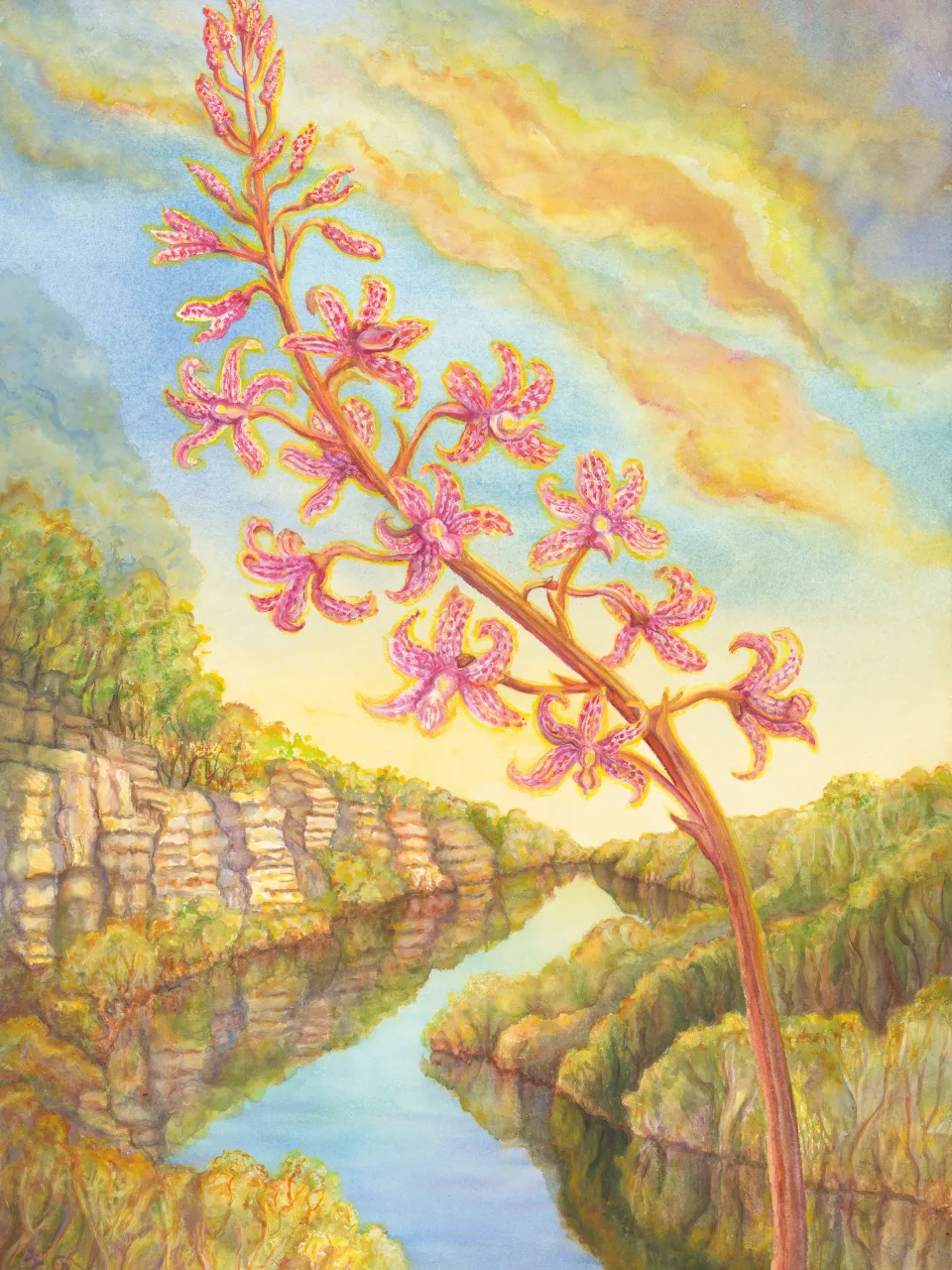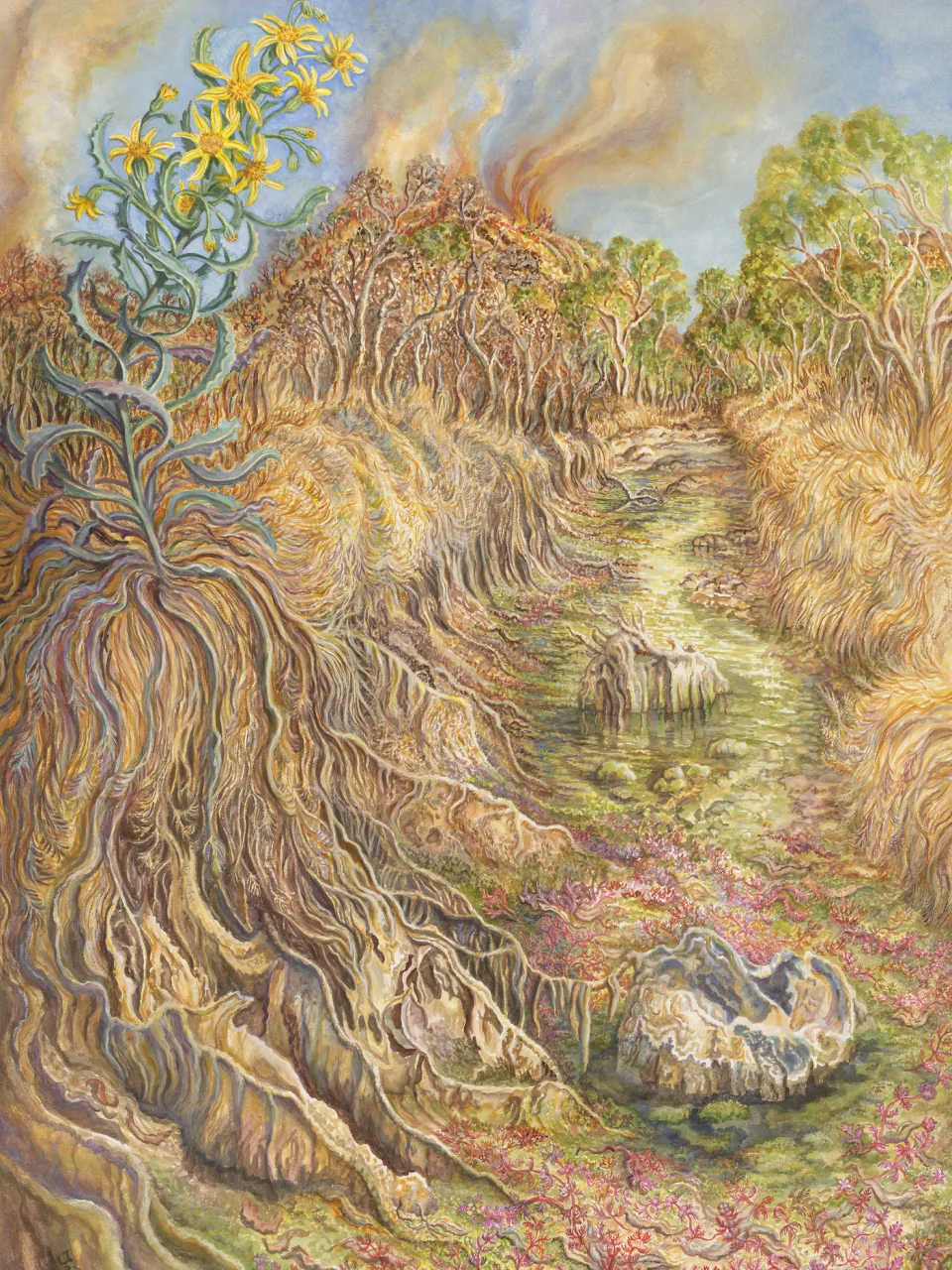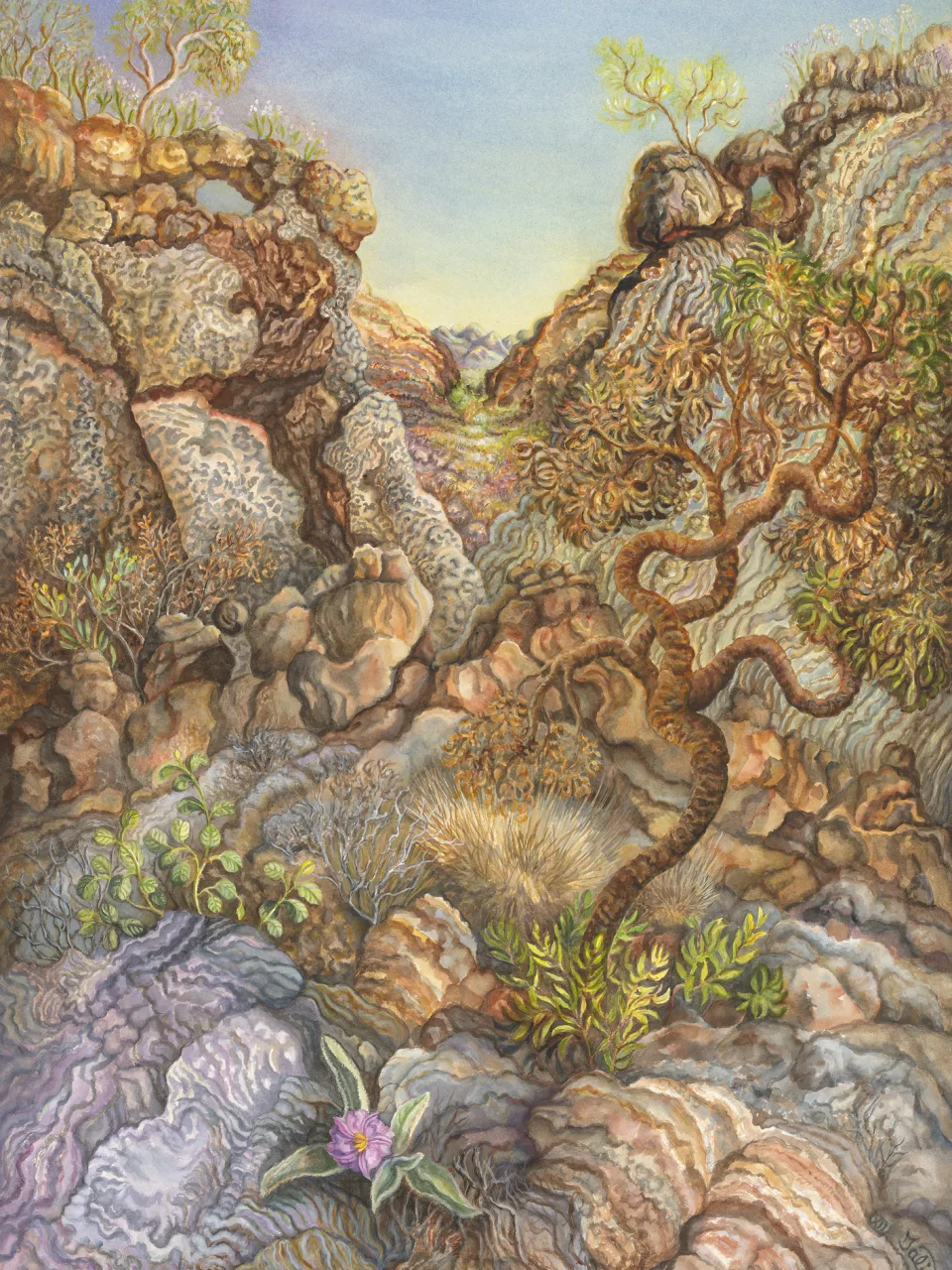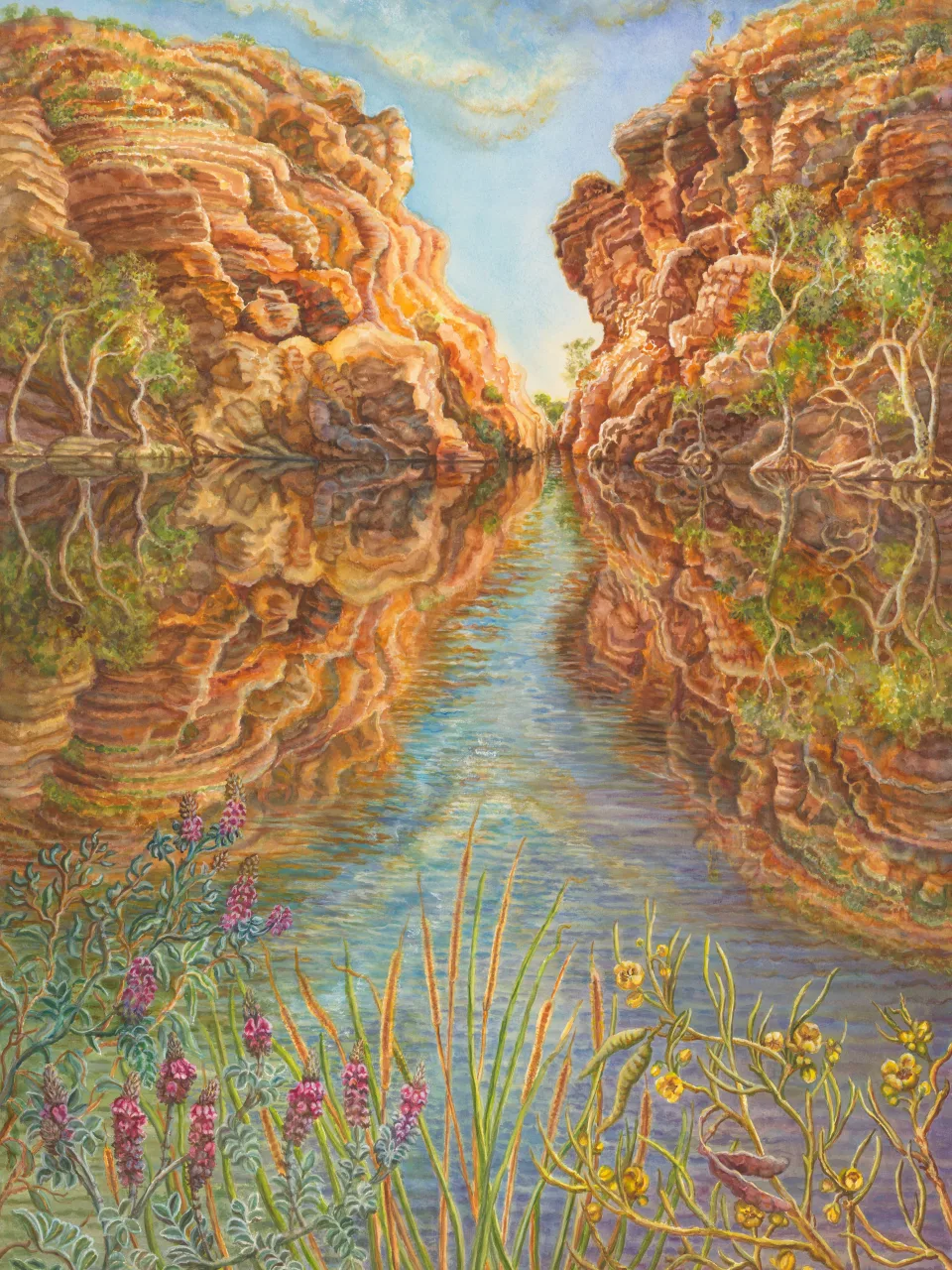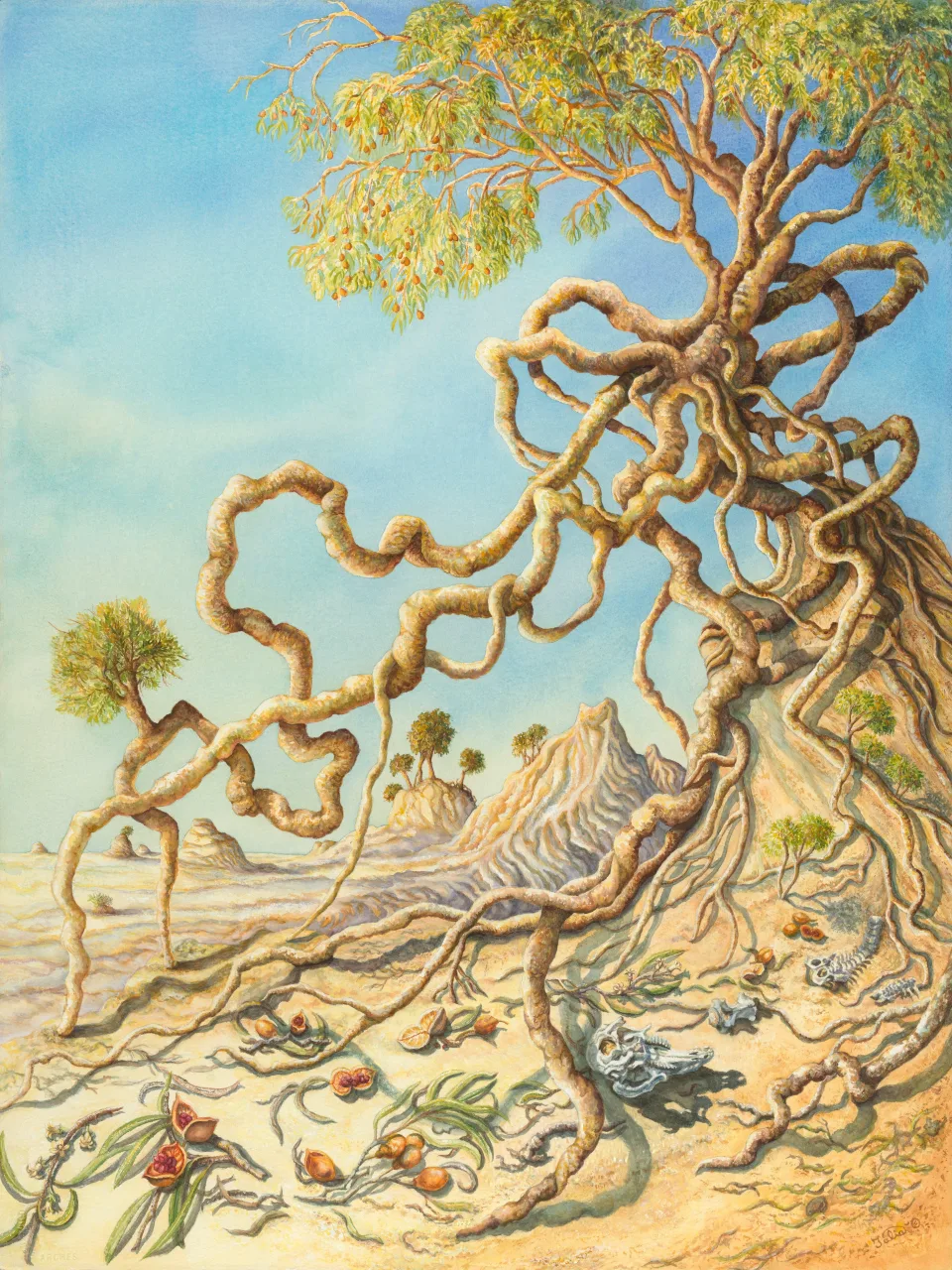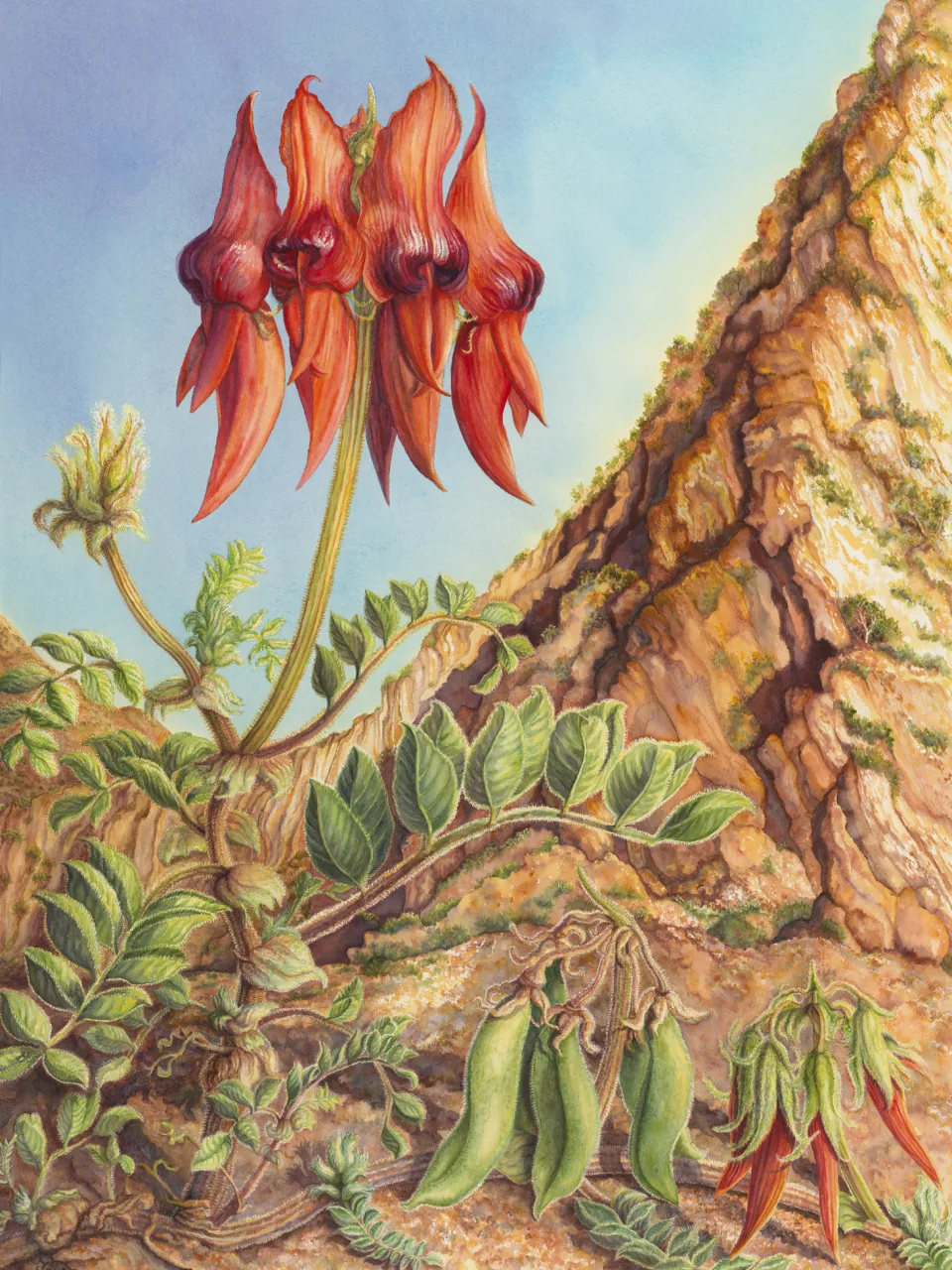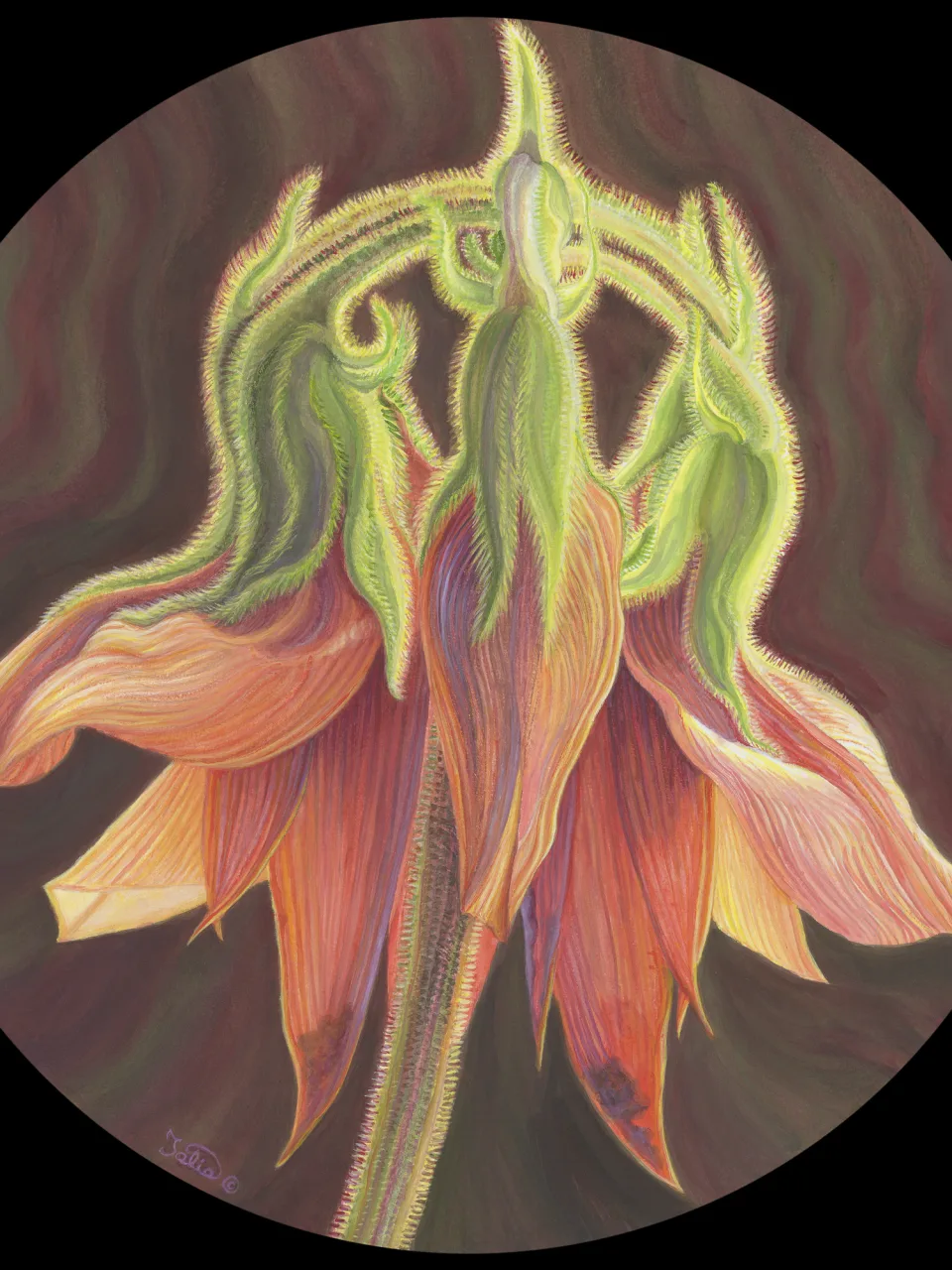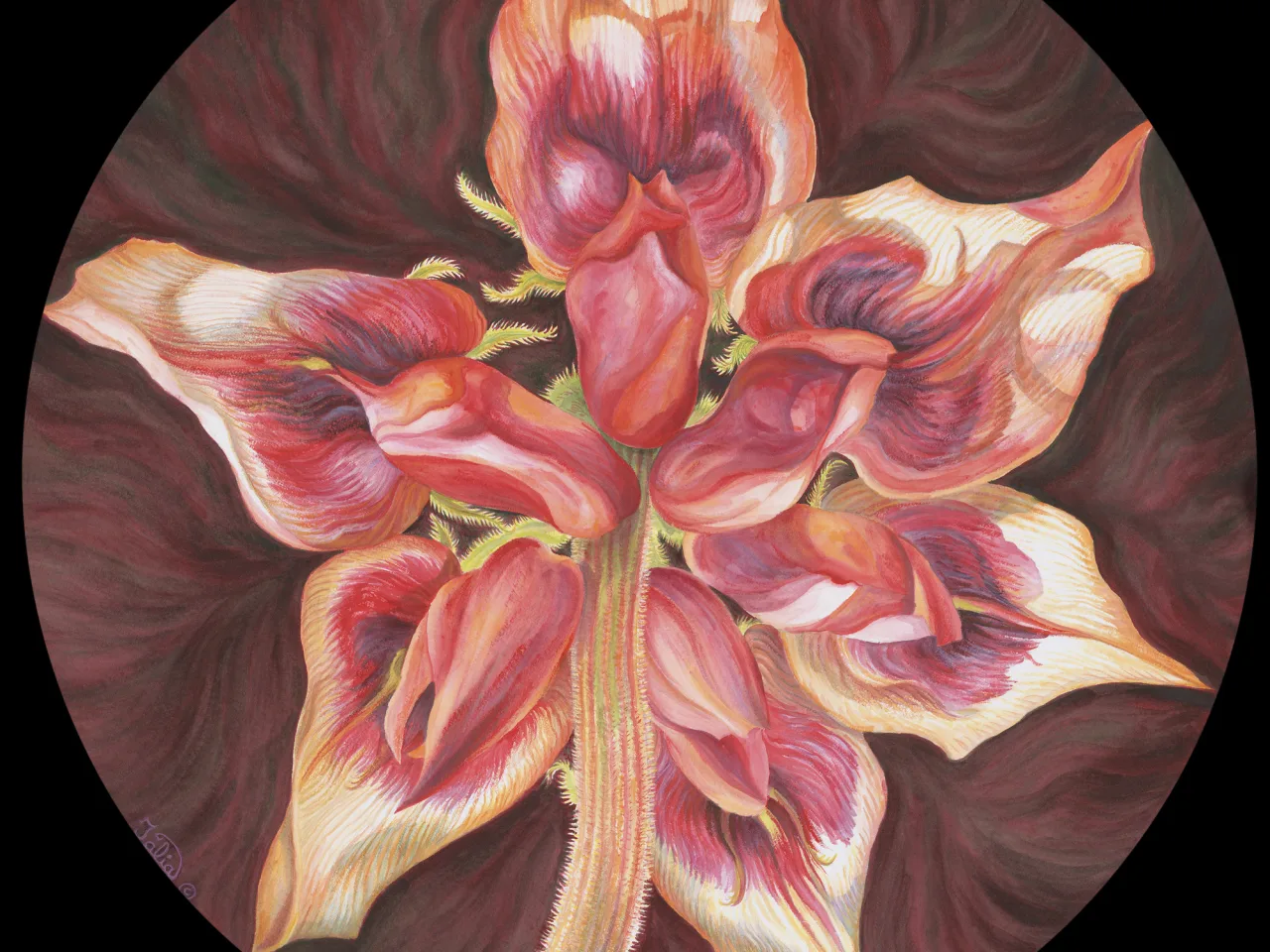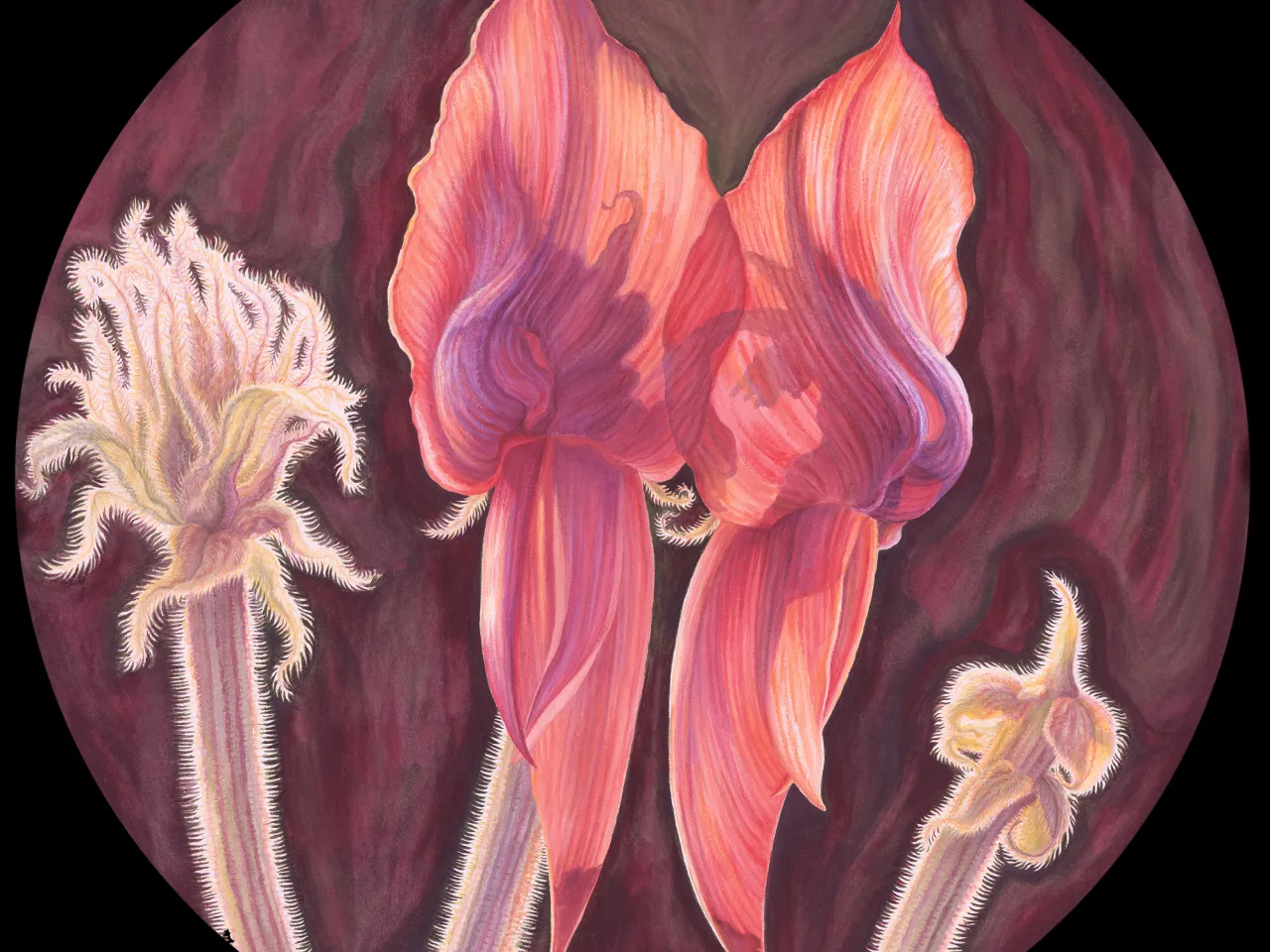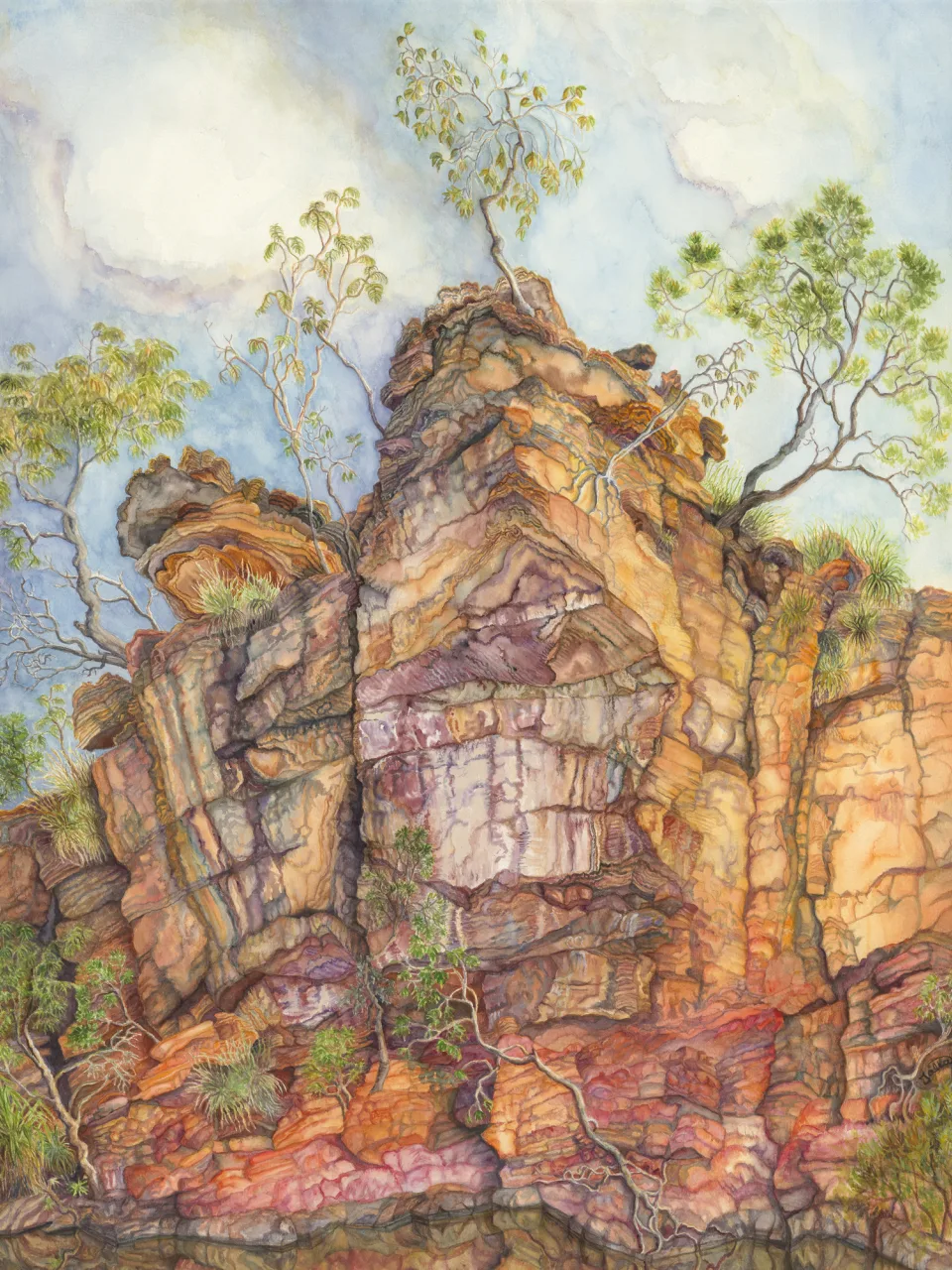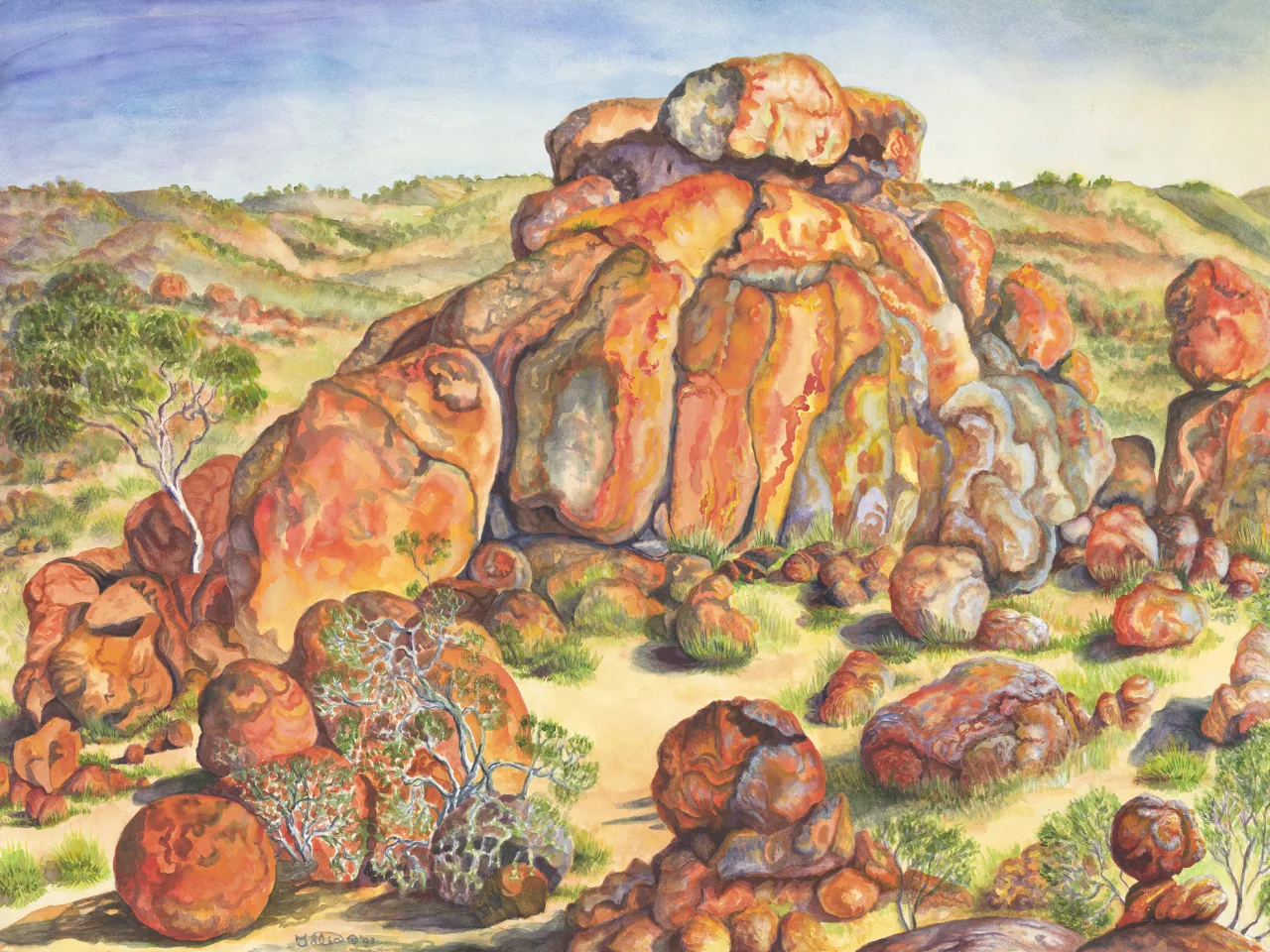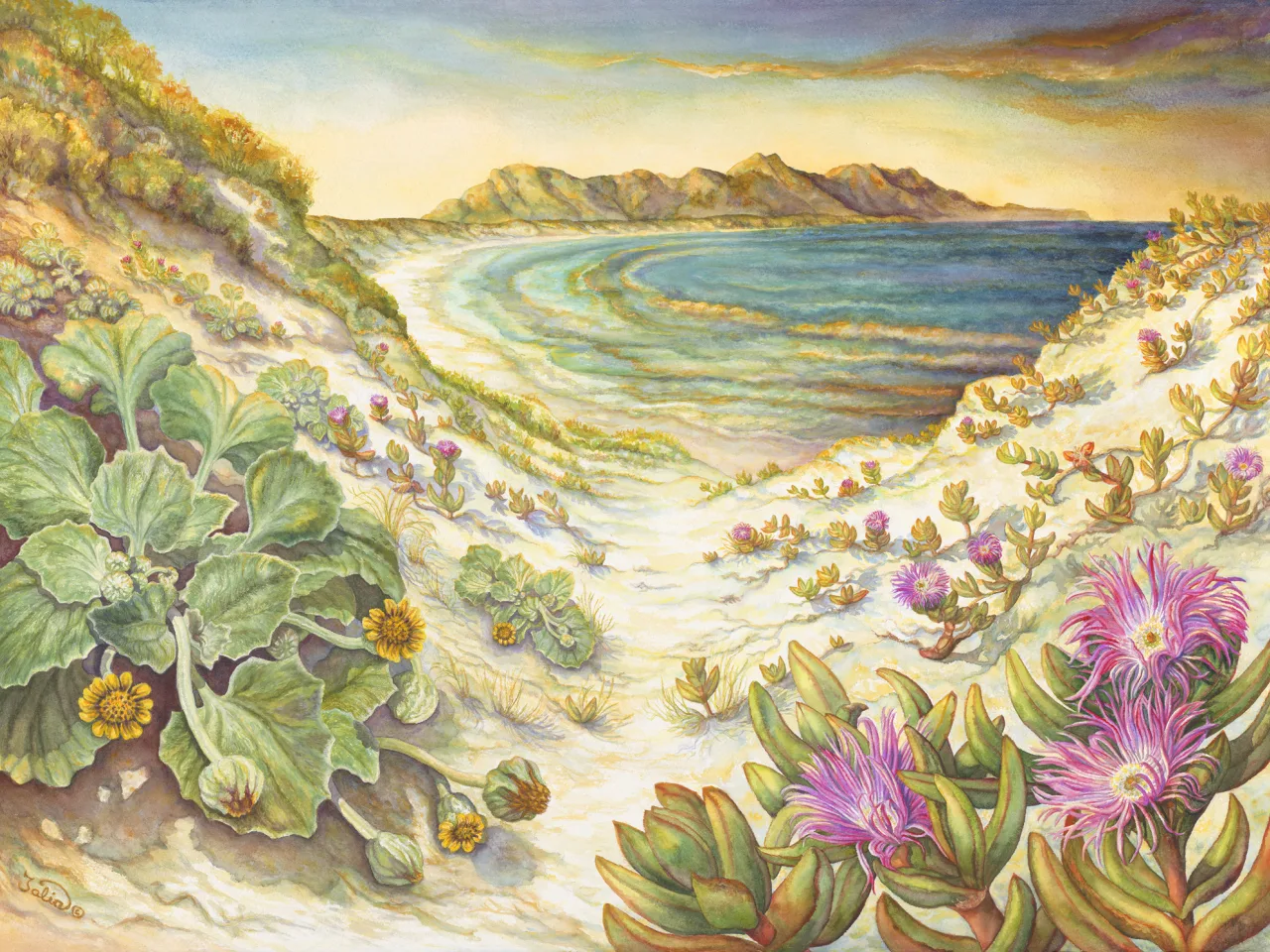Artwork 22 Flame Trees at Wallaman Falls, Queensland
Section 17
Gondwanan Flora of the Wet Tropical Rainforest
Wallaman Falls, Girringun (Lumholtz) National Park, Queensland, Queensland
- 1. Banksia aquilonia (tropical banksia)
- 2. Brachychiton acerifolius (flame tree)
- 3. Calamus australis (lawyer cane)
- 4. Calamus motis (lawyer cane)
- 5. Schefflera actinophylla (umbrella tree)
Artwork 22
Buy a print
Limited edition giclee archival quality print on 310 gsm Ilford cotton rag (from an original work in watermedia on watercolour board, 76 cm high x 51 cm wide)
from the artist
The highest single-drop falls in Australia, Wallaman Falls, at 268 m, are a spectacular sight. Perennial Stony Creek plunges over a sheer cliff at the edge of a eucalyptus-forested plateau into a 20 m deep pool. Spray and mist create a rainbow of colour, and ensure the growth of rainforest near the base and up the slopes of the gorge. When heavy rains swell the creek the Falls are at their most dramatic. It was quite hot when we hiked to the base of the Falls, so we really enjoyed cooling off in the pool!
One of the most beautiful trees growing here, the flame tree (Brachychiton acerifolius), has a long fossil history. A 50-million-year-old fossil leaf discovered in New South Wales closely resembles the modern leaves in my artwork (White, 1986, p. 220). The genus Brachychiton is predominantly Australian, with 31 of its 32 species being endemic (Williams & Adam, 2010, p. 38), and also includes the “kurrajongs” and “bottle trees”. Although the featured flame tree has leaves and pods as well as flowers, many lose most leaves before flowering, and the trees become a spectacular glowing red—hence the name.
To right is another popular plant from the rainforest, which, like the flame tree, is very adaptable and has been popularised as a garden plant. This is the aptly named “umbrella tree” (Schefflera actinophylla).
The “lawyer canes” (a.k.a. “wait-a-whiles”)—ancient palms with wicked spines—have a Gondwanan ancestry from possibly 100 mya, when these very early angiosperms from the equatorial regions were spreading out across the globe. Two species are featured—Calamus australis, with many reddish spines, and Calamus moti, with yellow spines.
To lower left is a plant we usually associate with open woodland and drier habitats, however Banksia aquilonia (aptly named “tropical banksia”) occurs in rainforest. Some of our earliest flowering plant arrivals in Australia (like the macadamias in Deep in a Wet Tropical Rainforest) belong to the family Proteaceae.
Once covering Australia, rainforests retreated as the continent moved northwards and Central Australia dried out some 40–50 mya. Plants thrived in mountain refuges (see Section 18), desert oases like Palm Valley (Section 08), and remote wilderness gorges like that occupied by the Wollemi Pine (Section 12). Adaptable plants moved into the arid zones and became “desert virtuosi” (Section 31).
